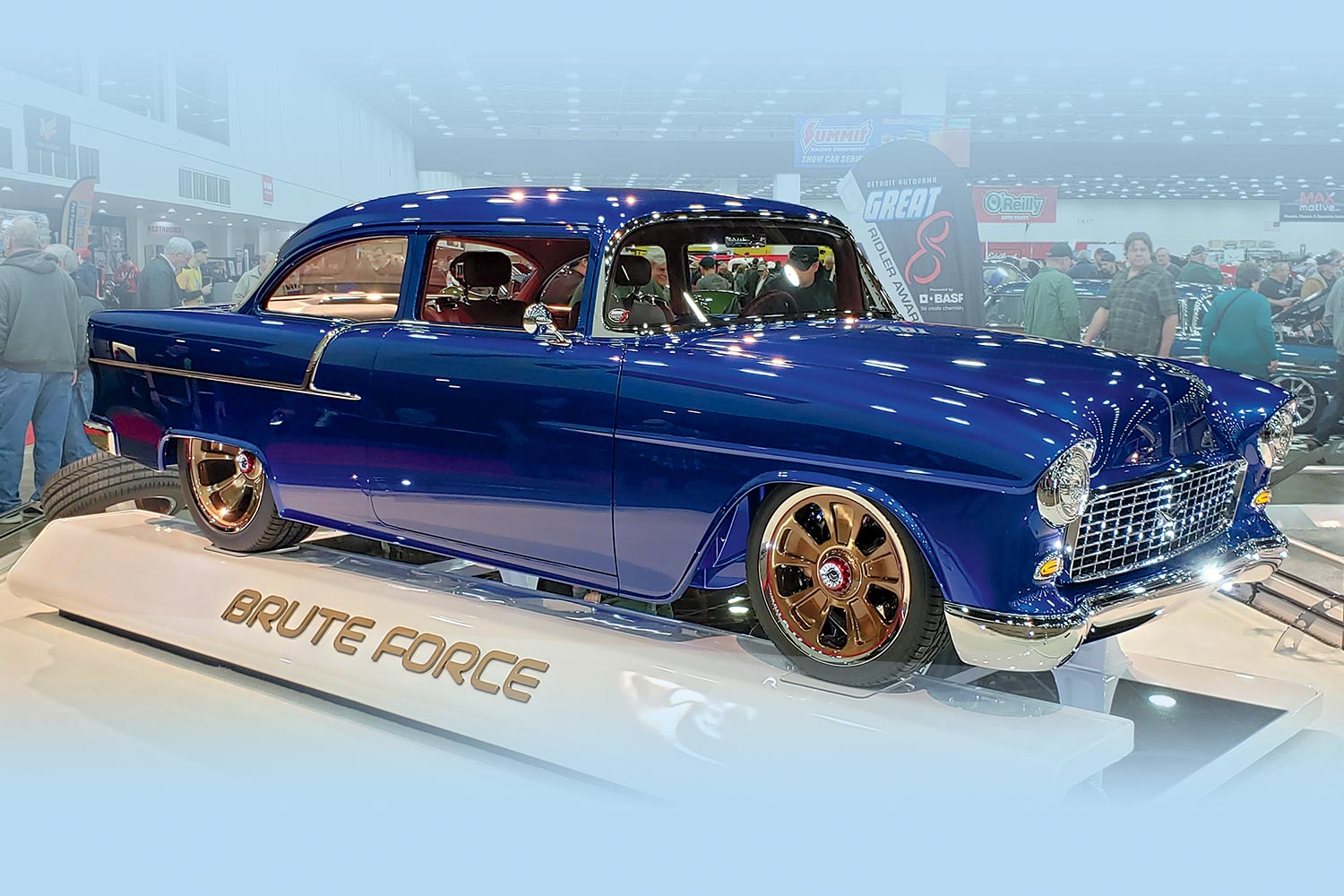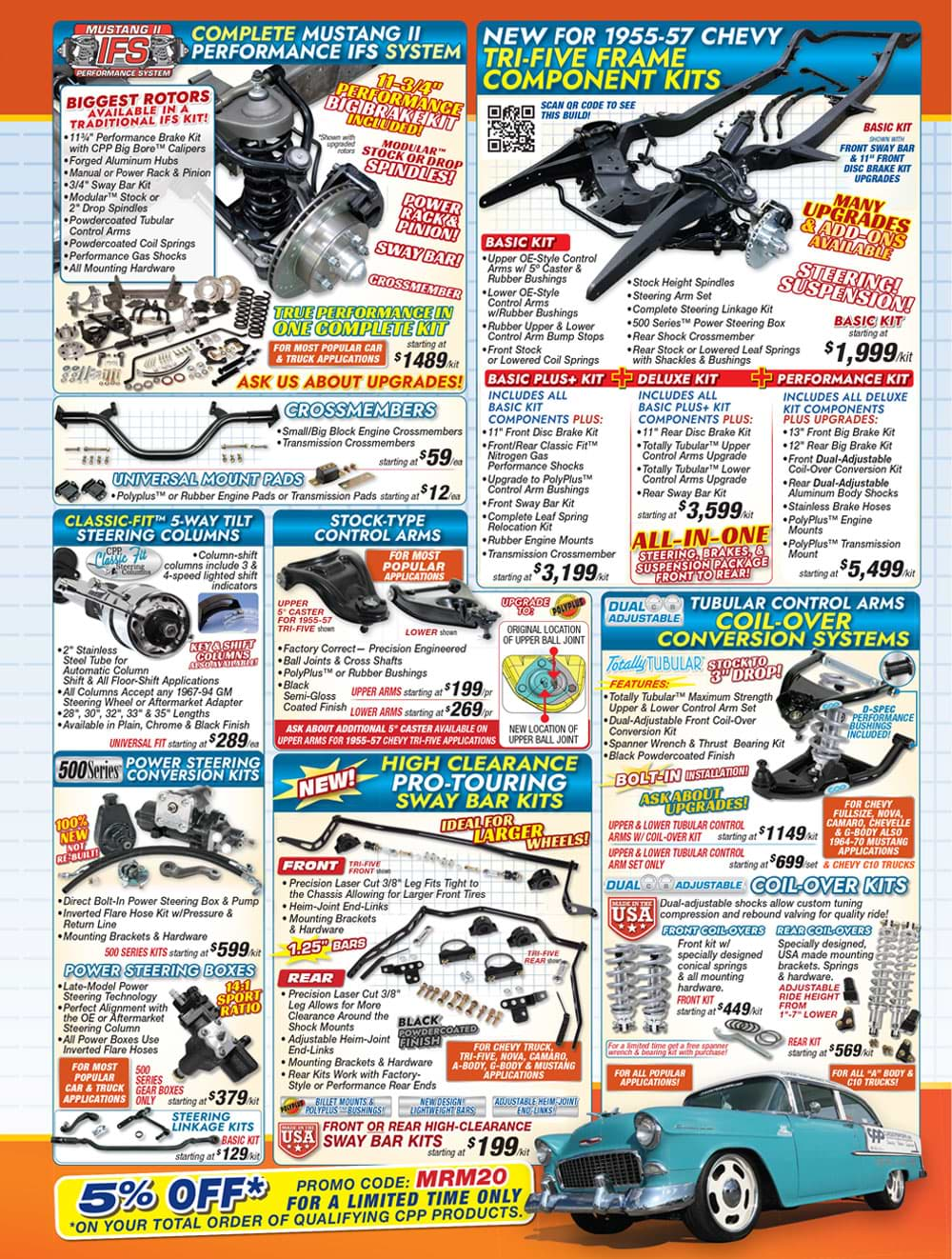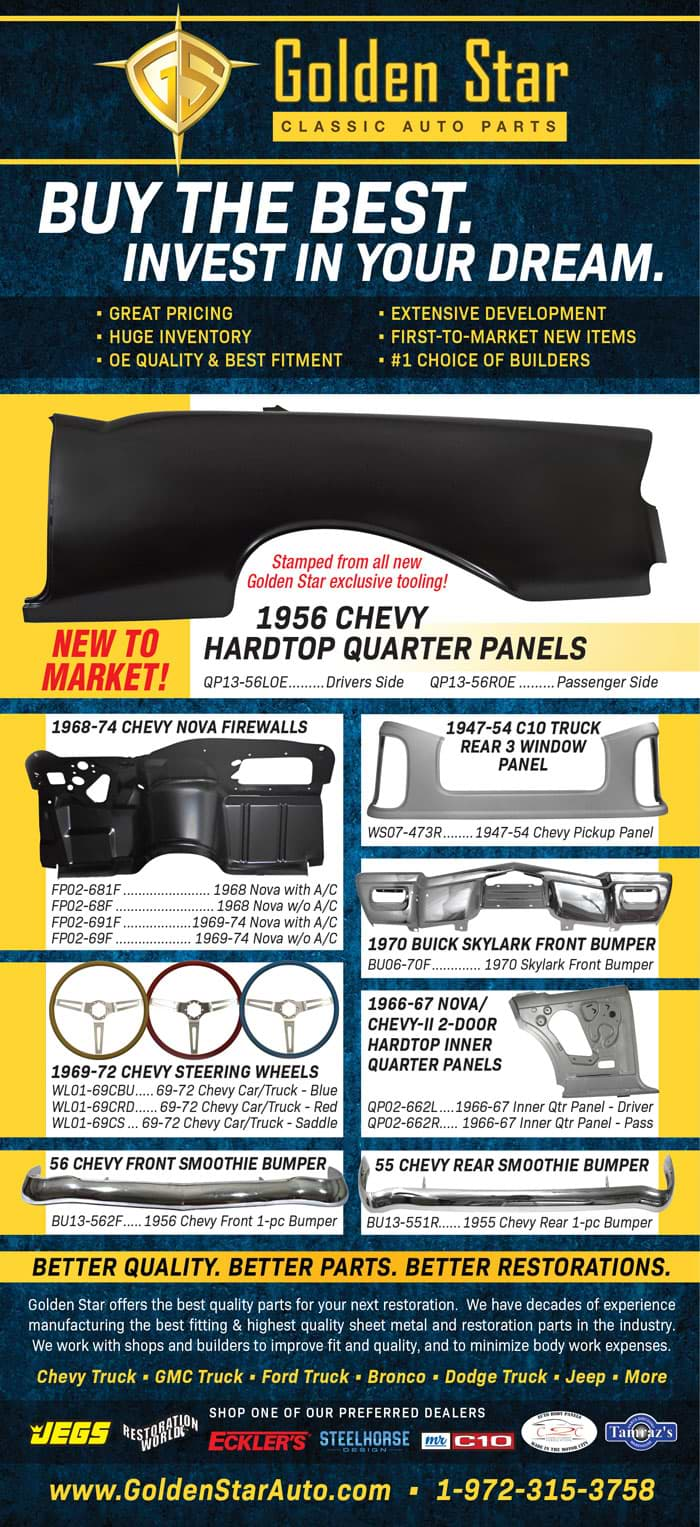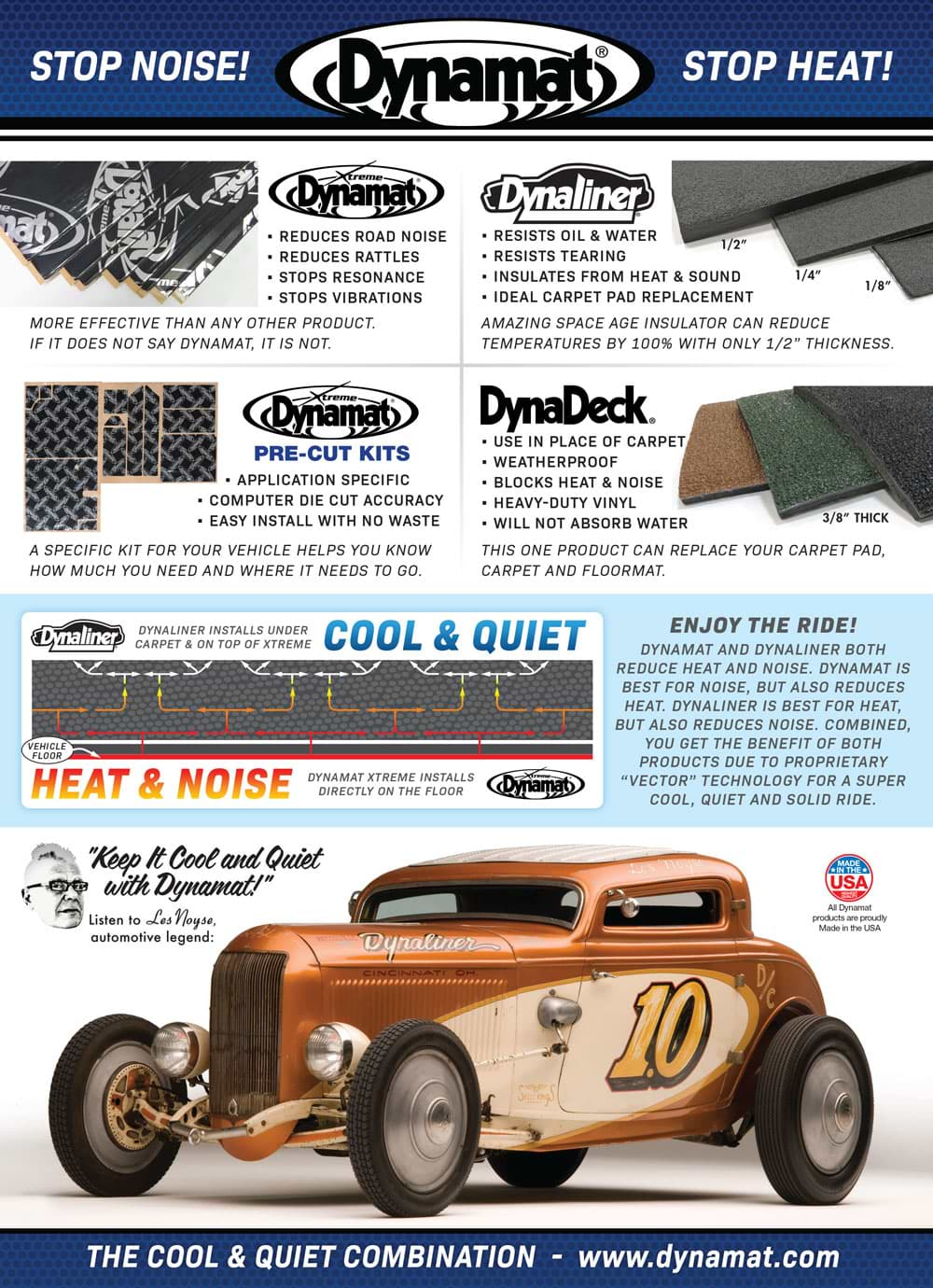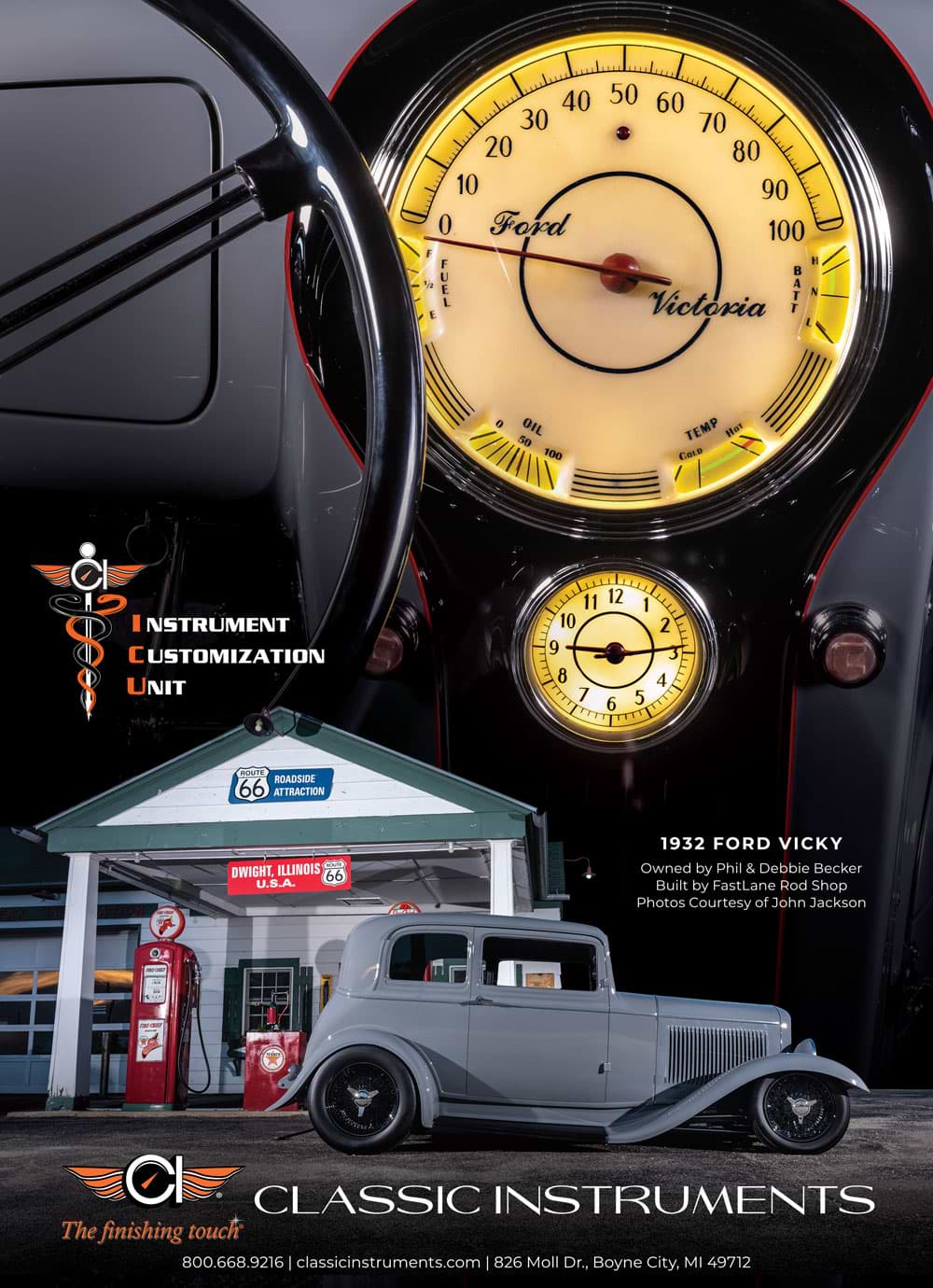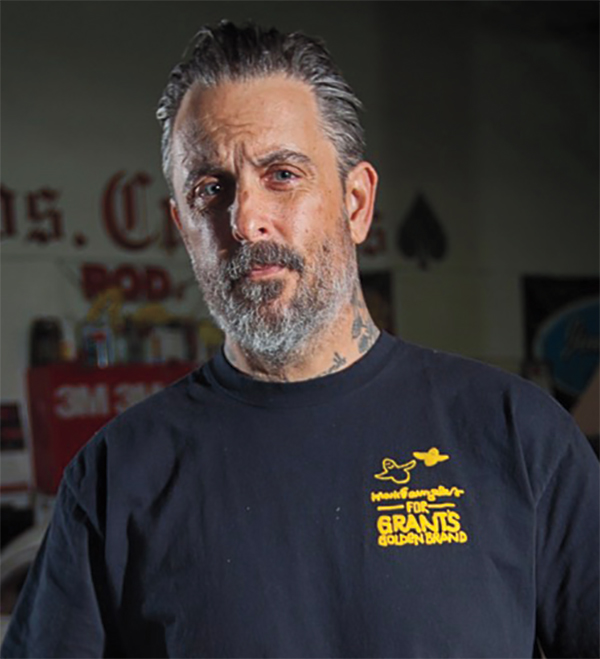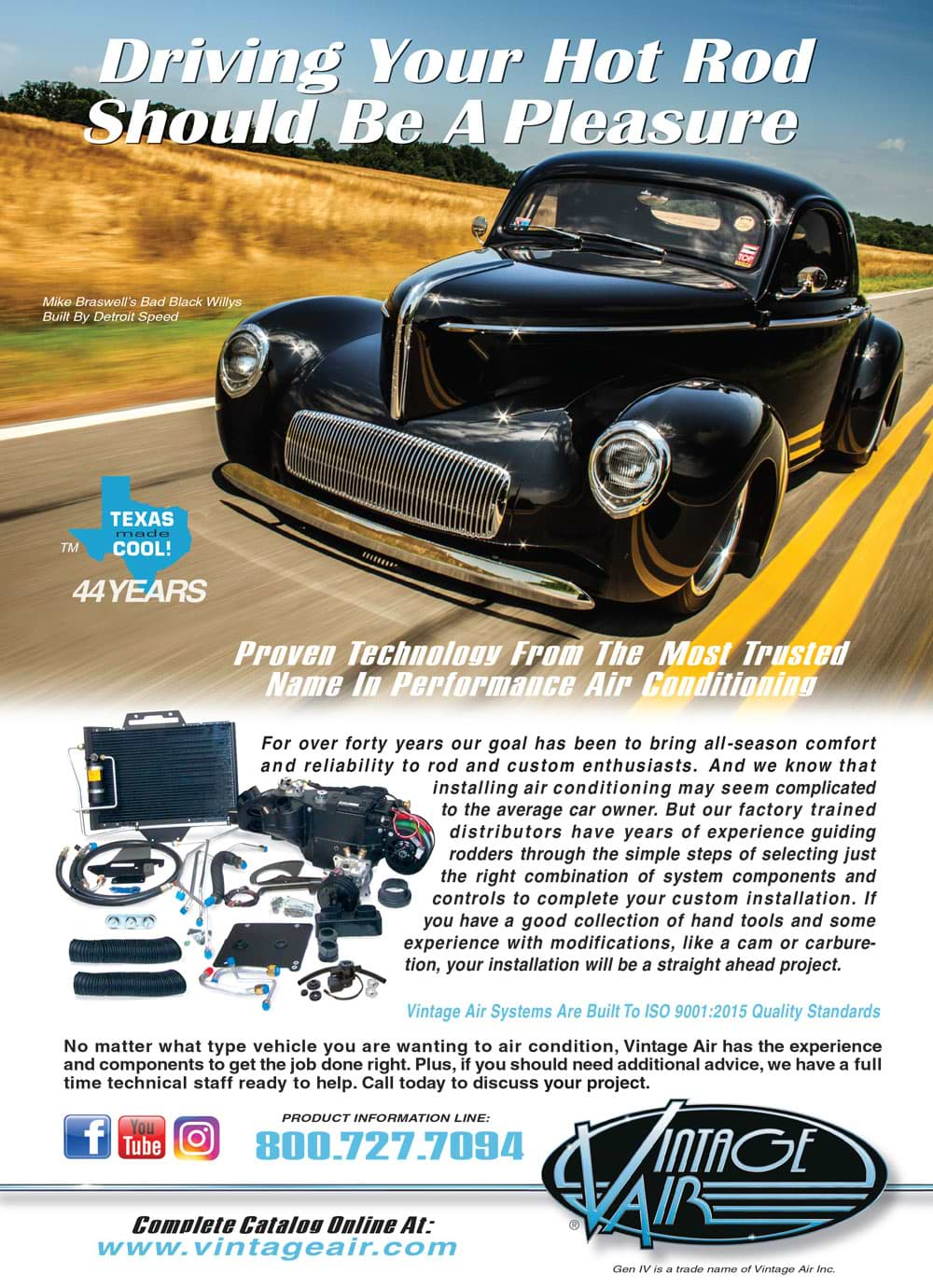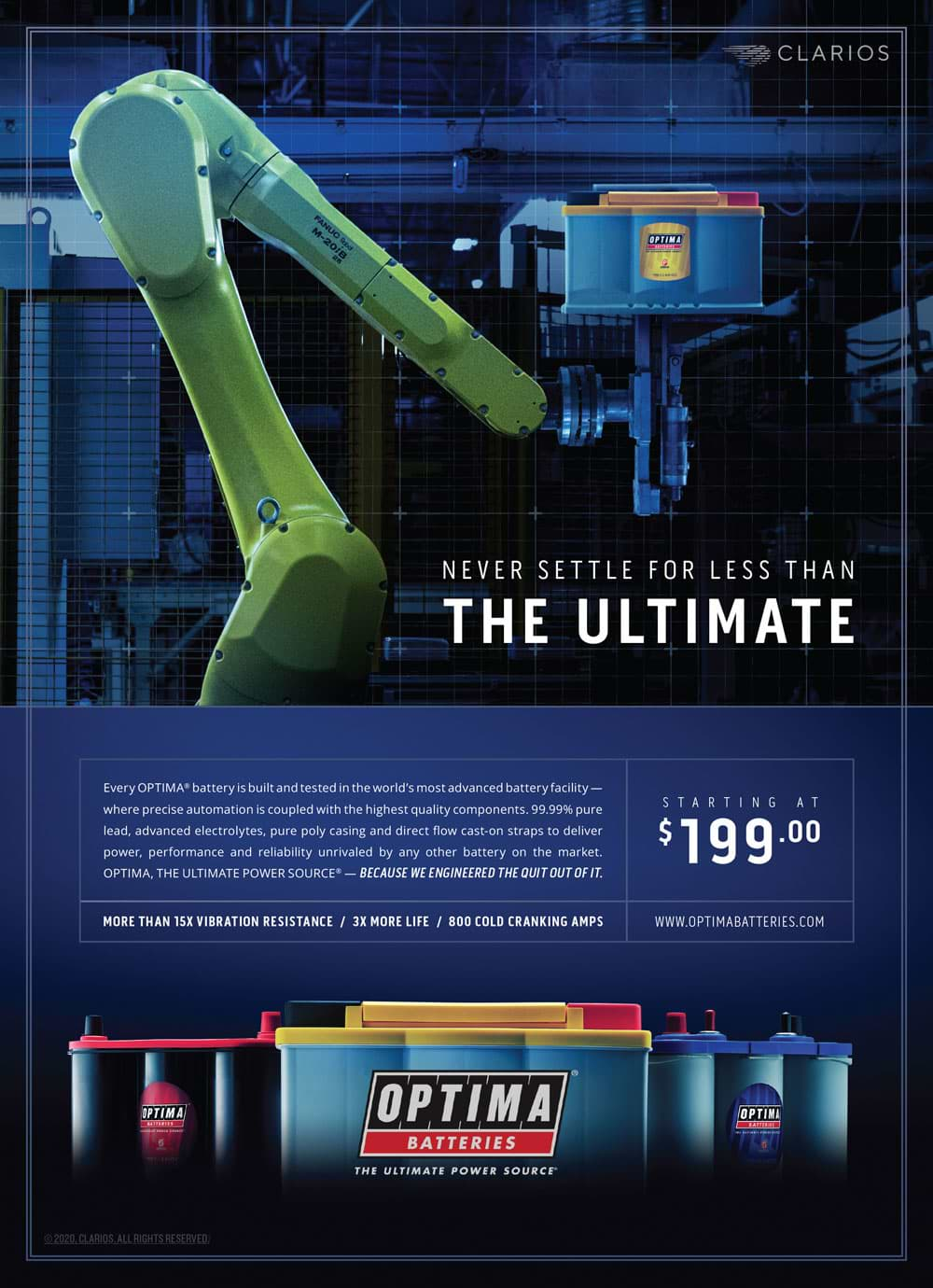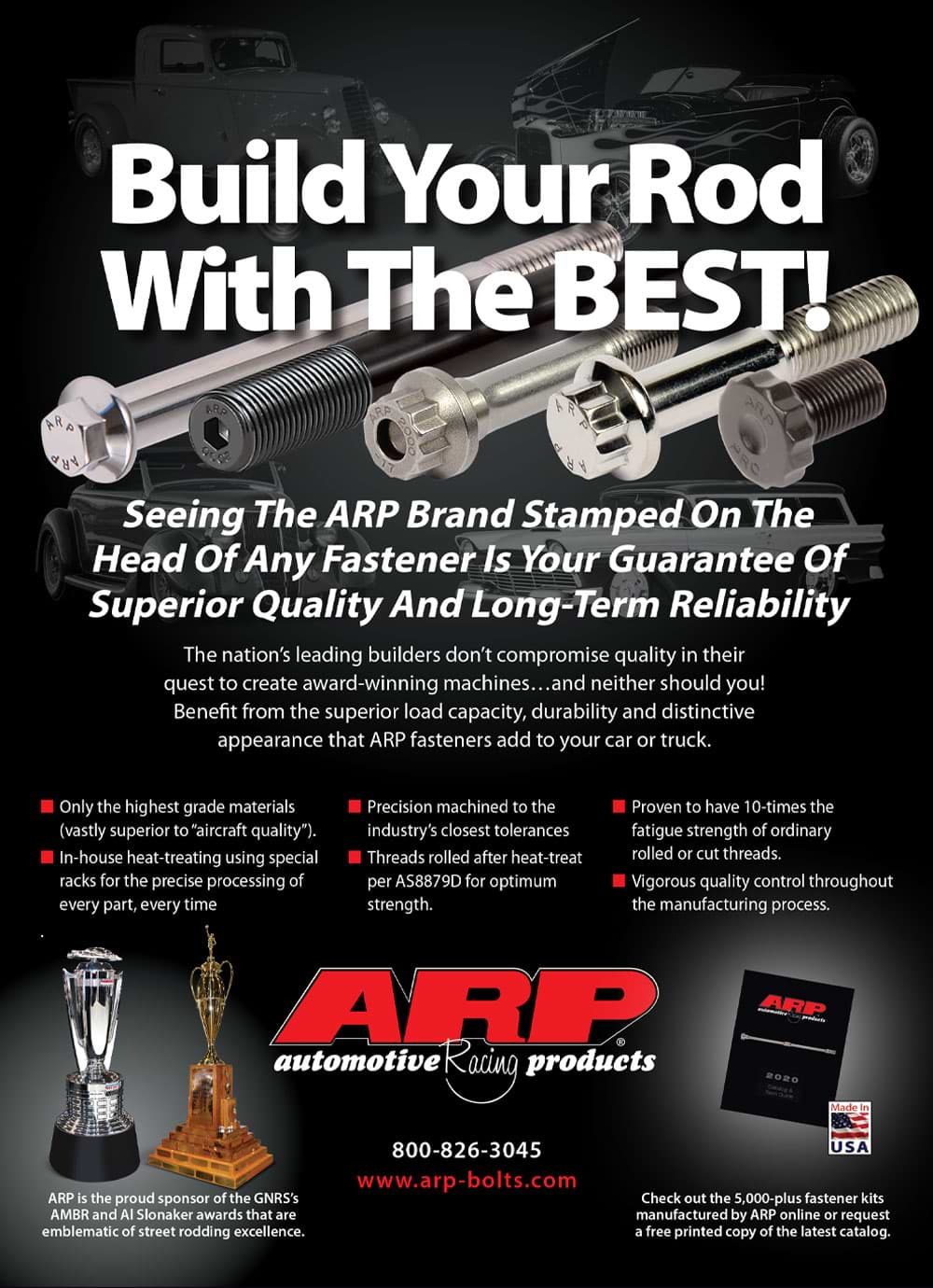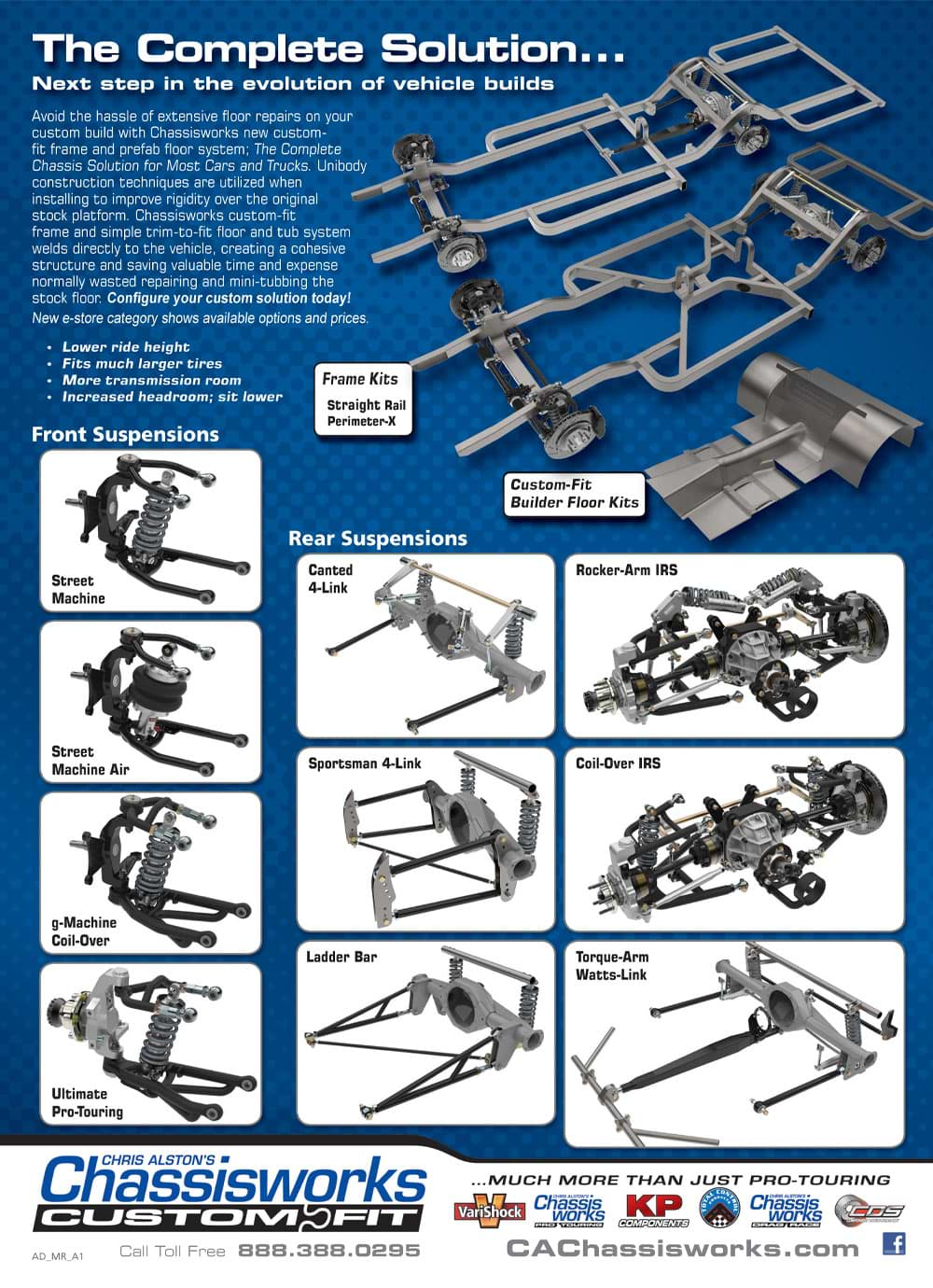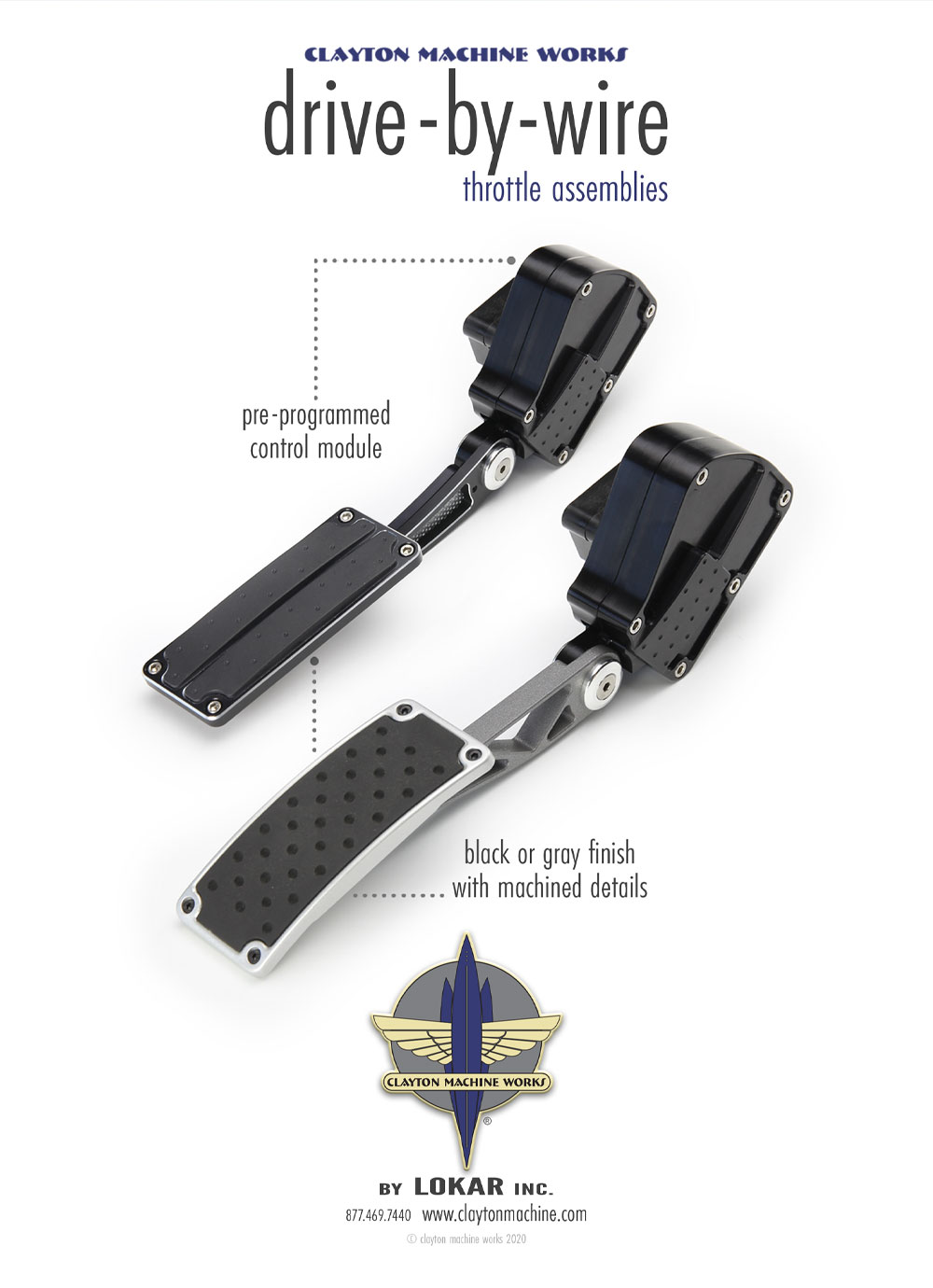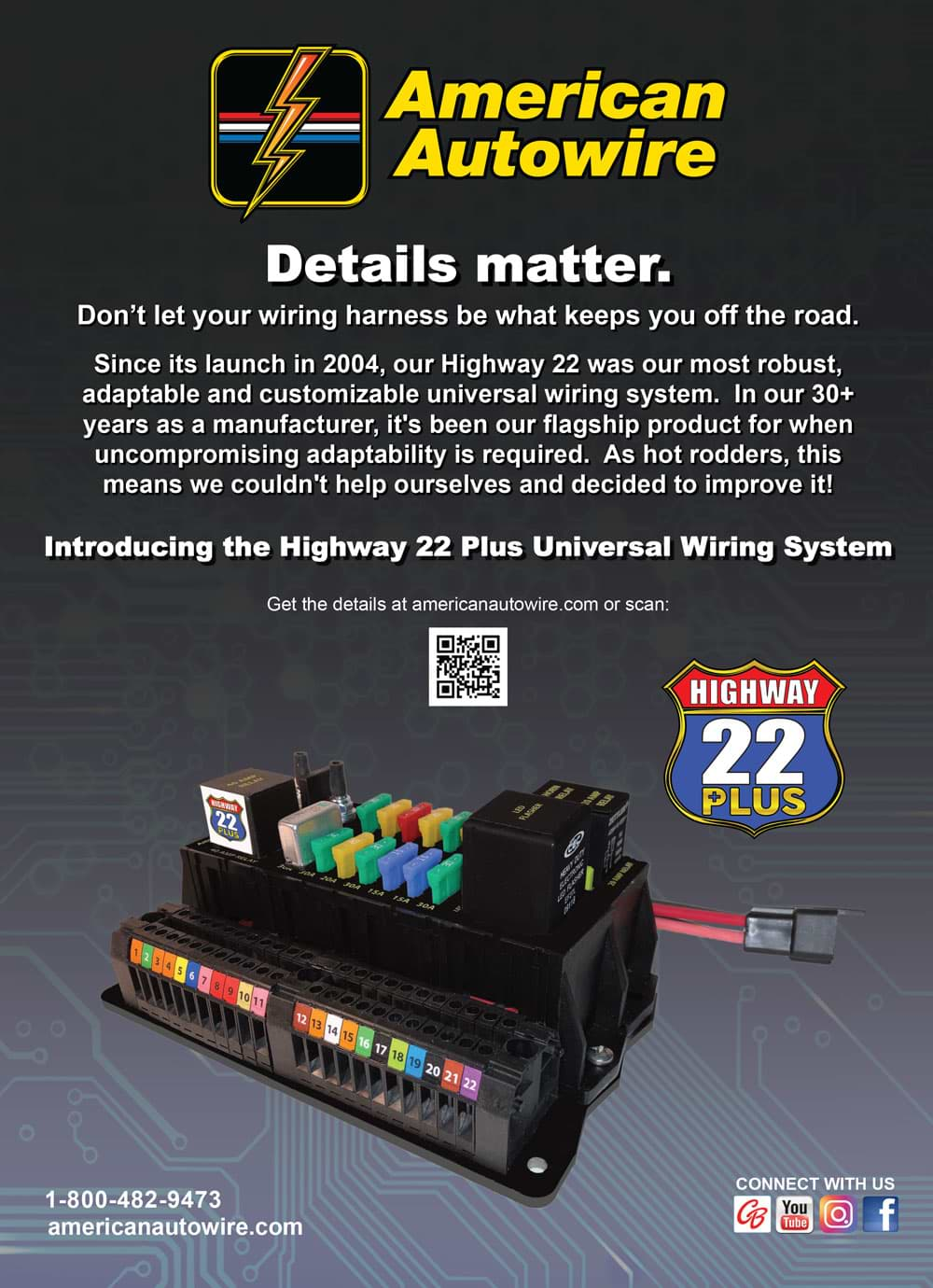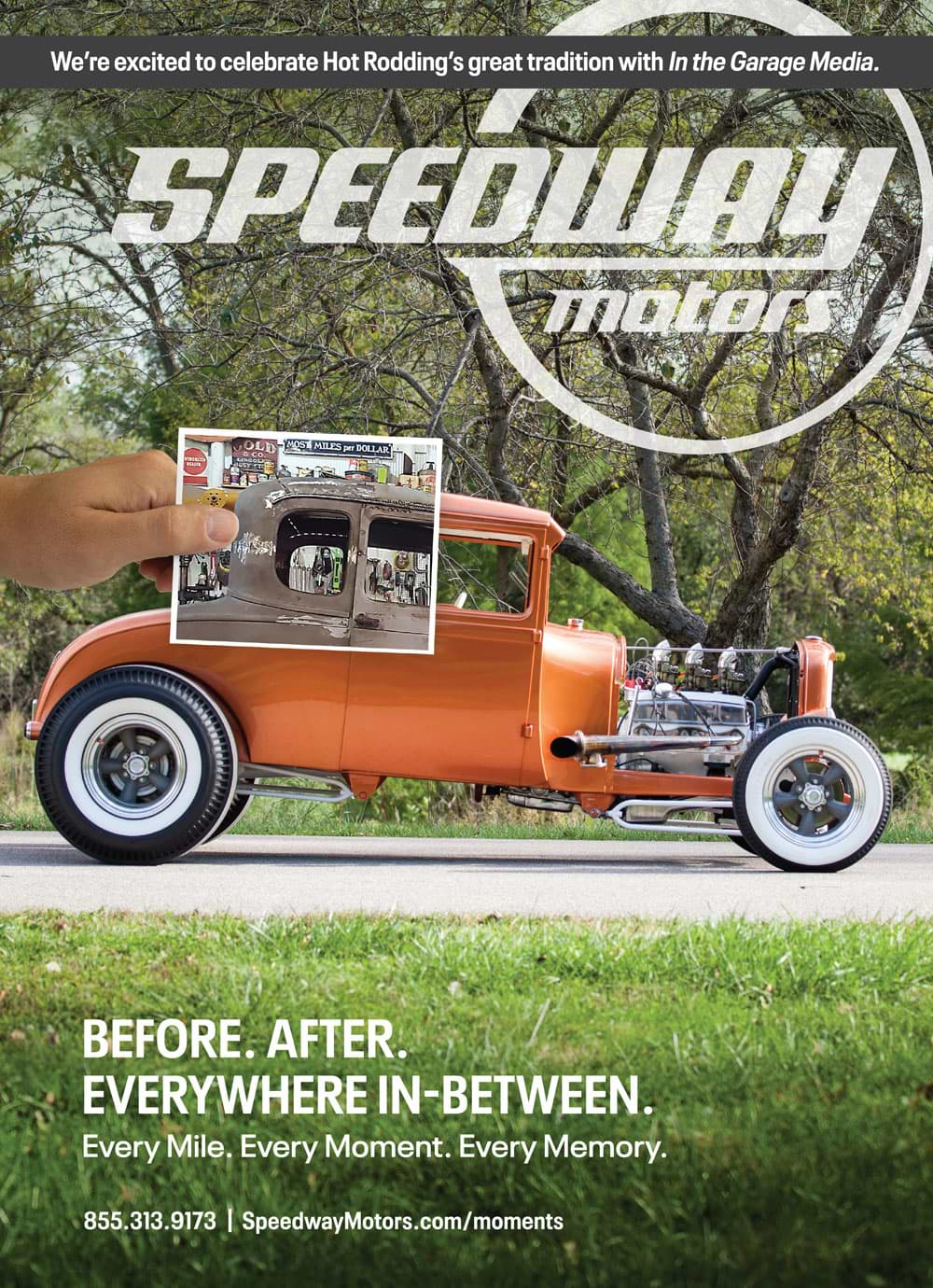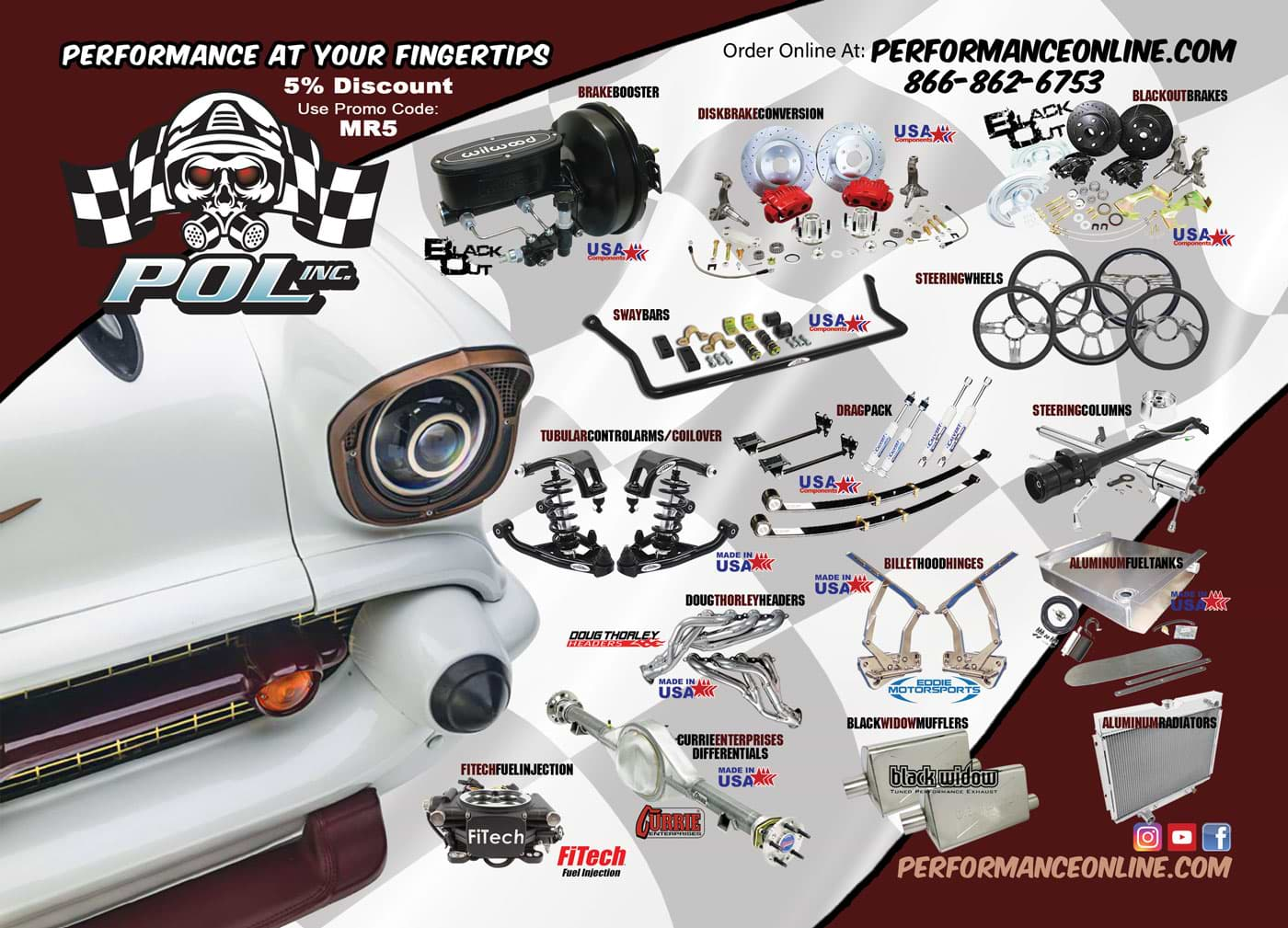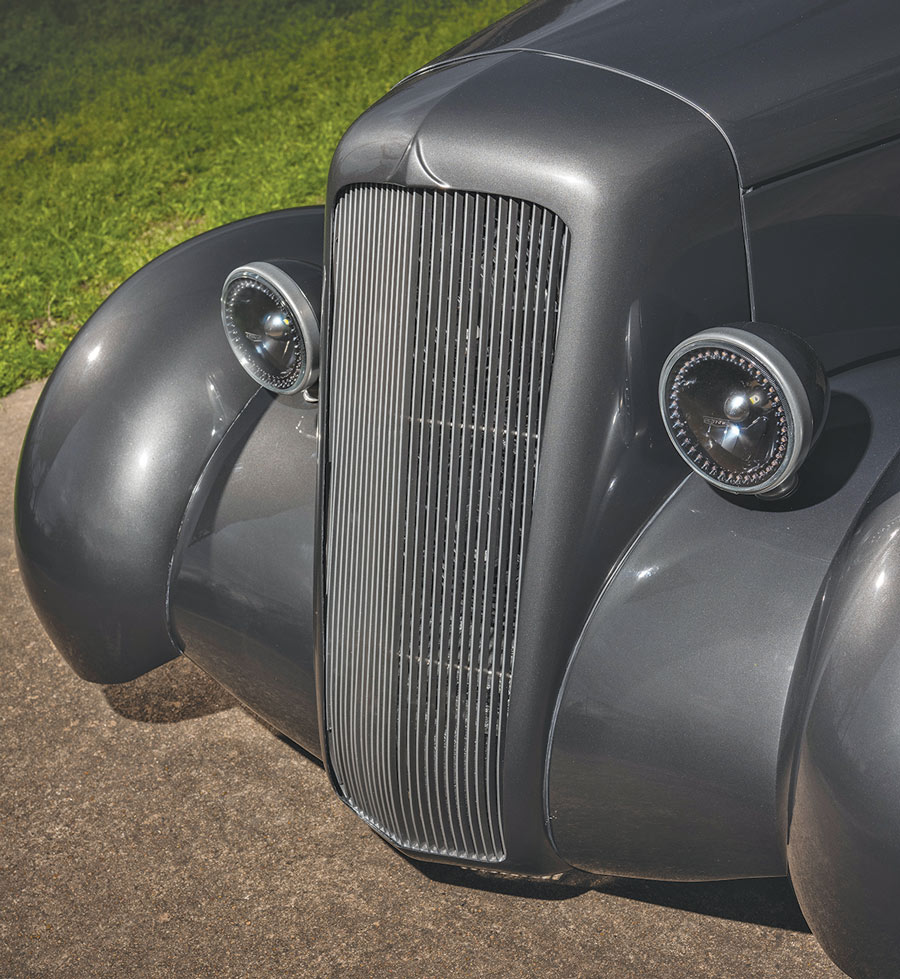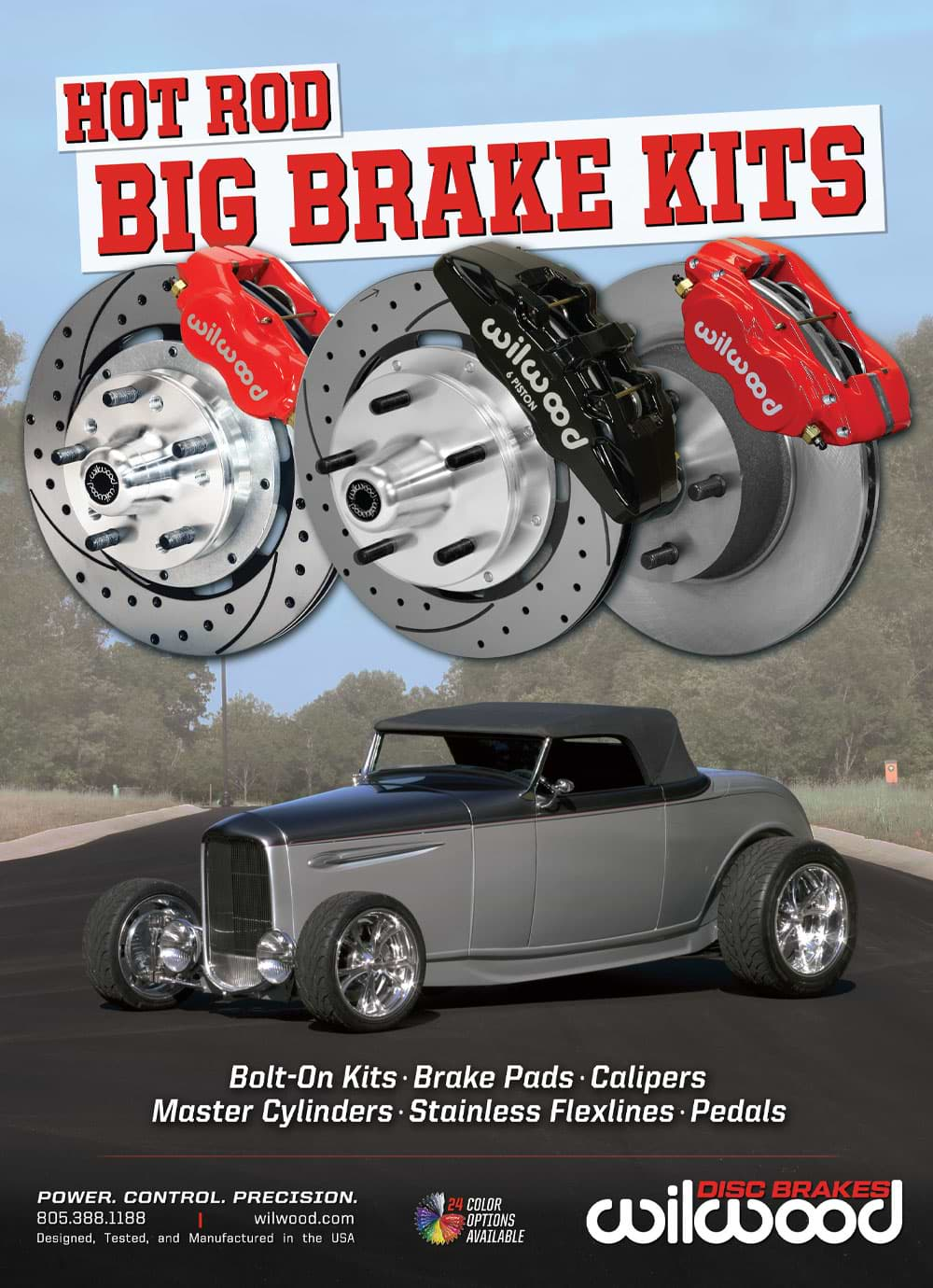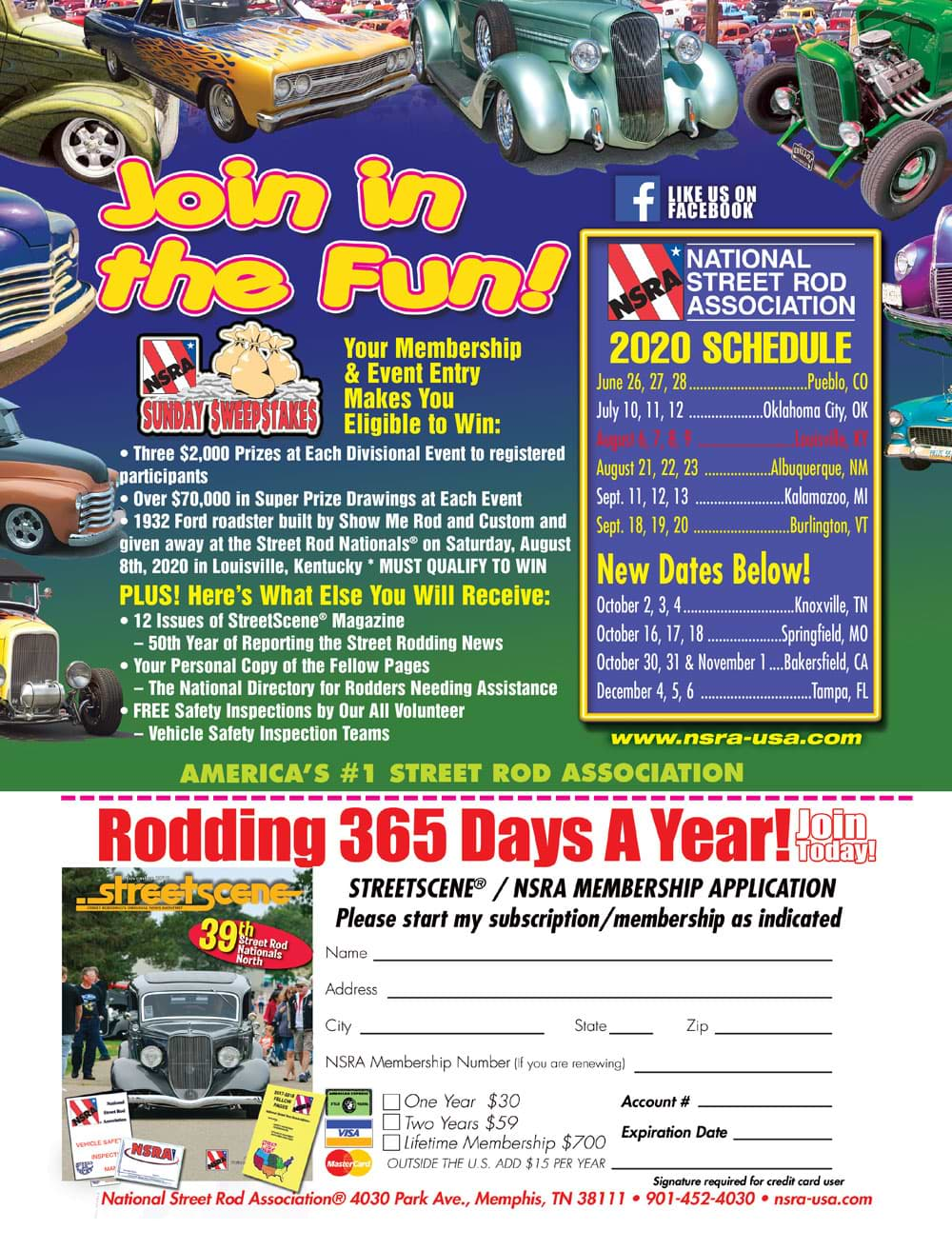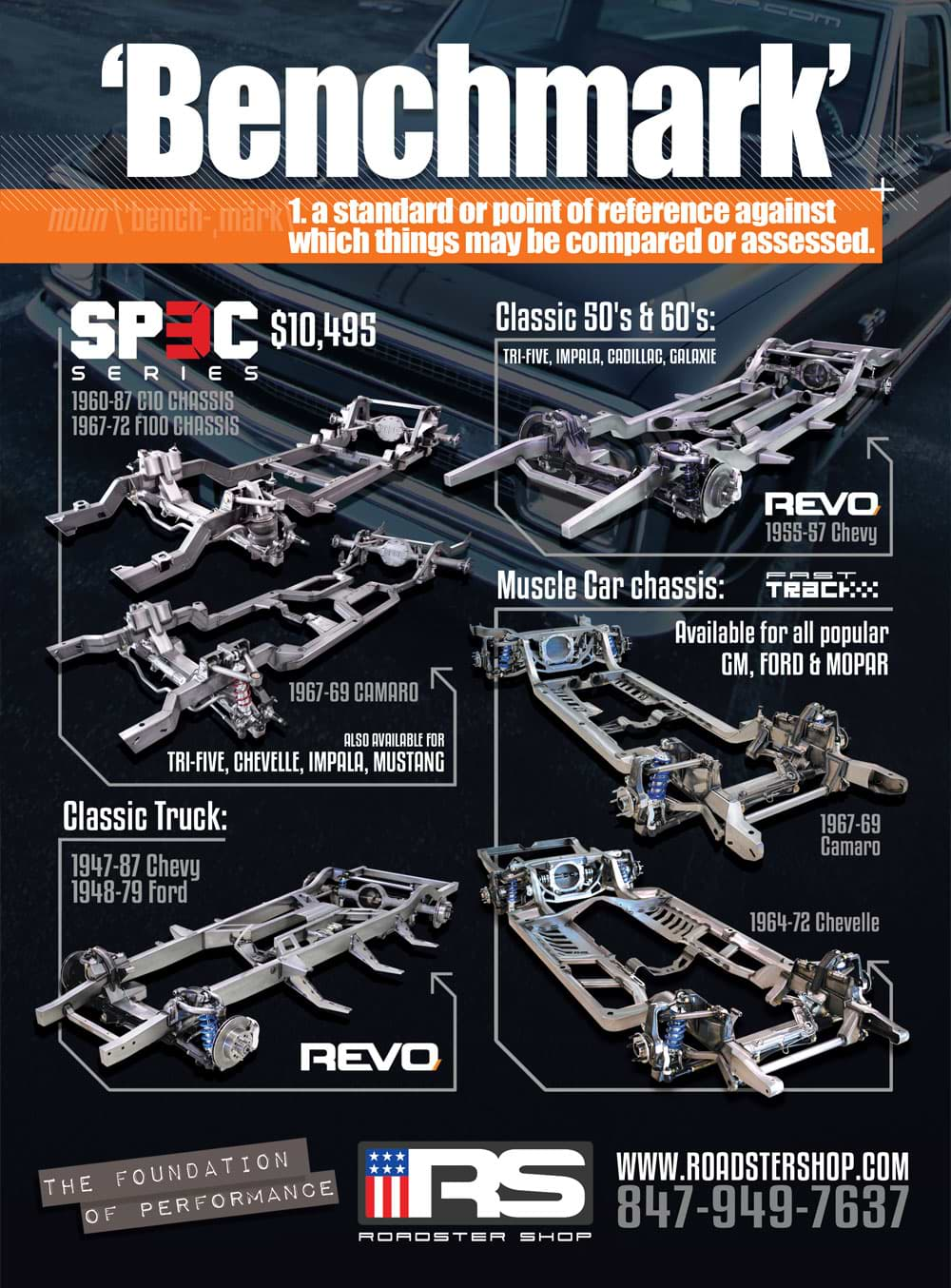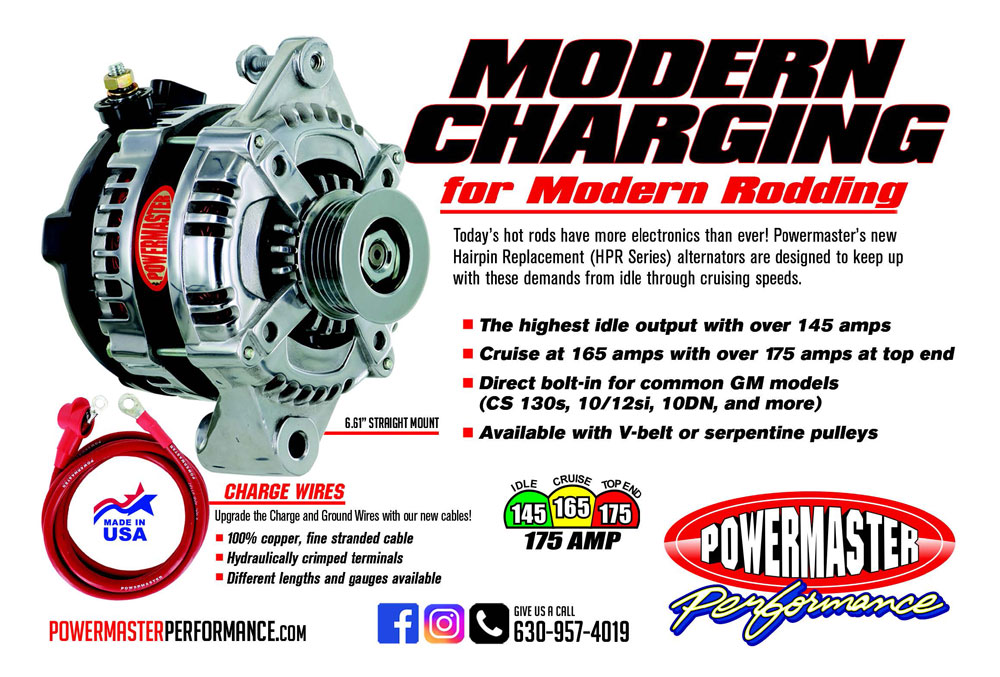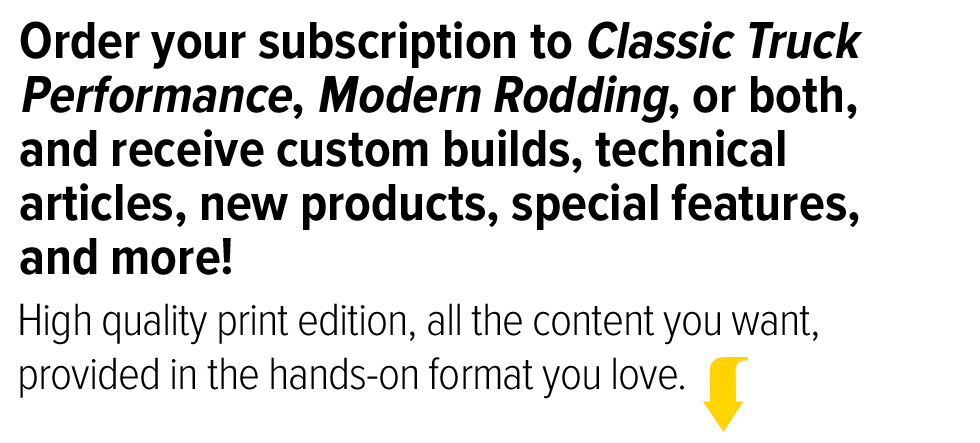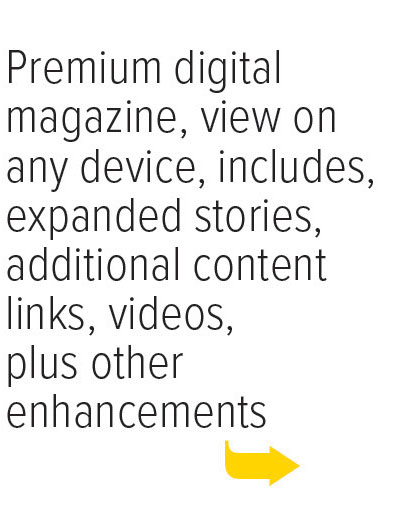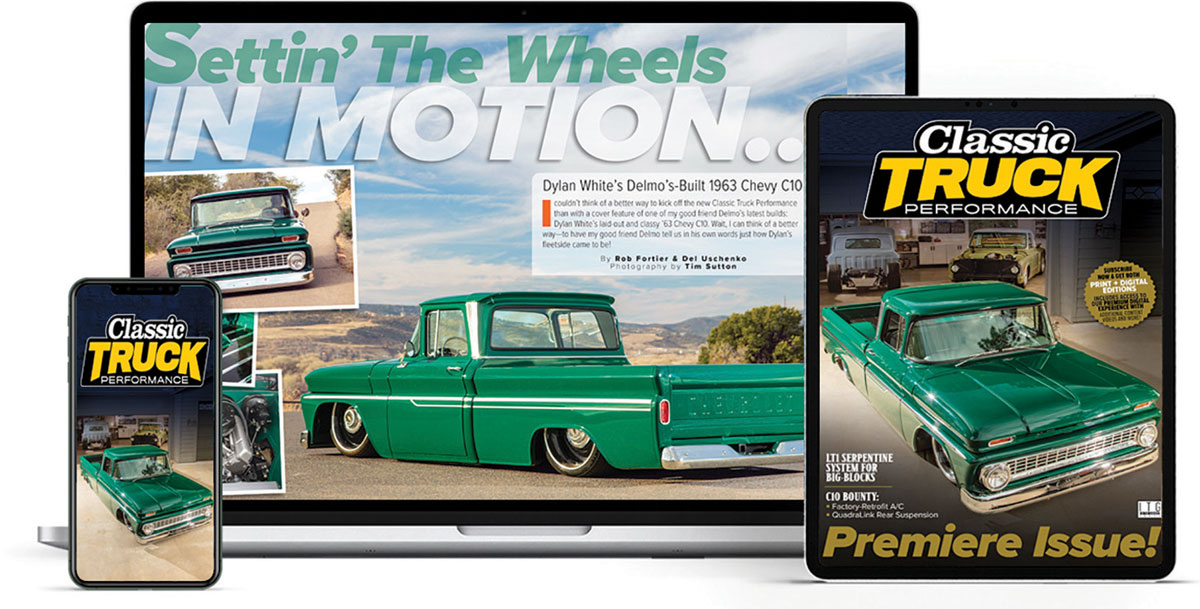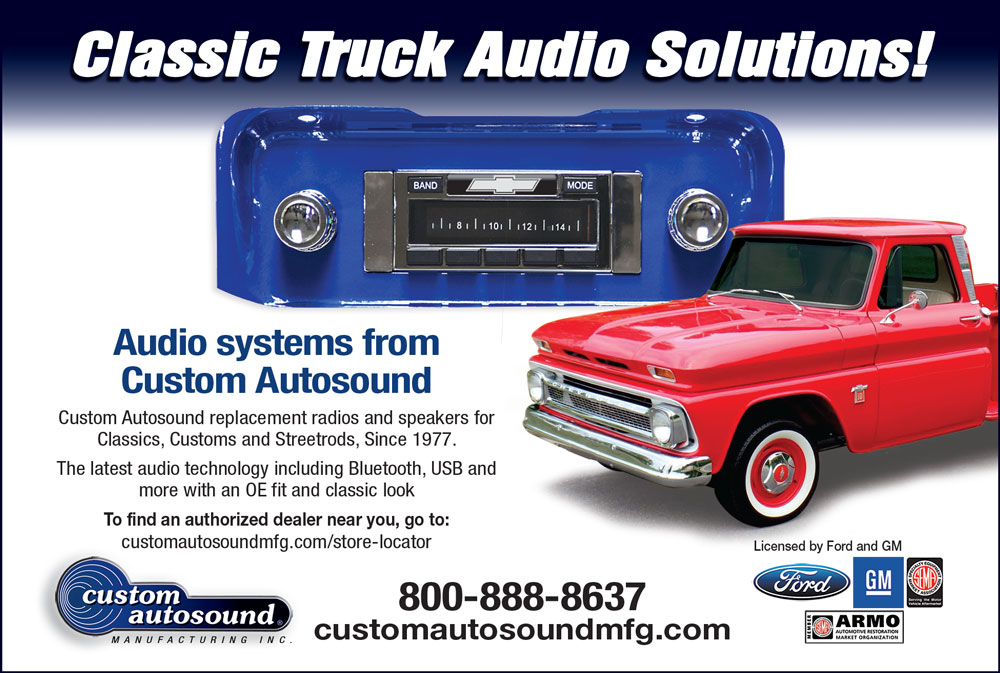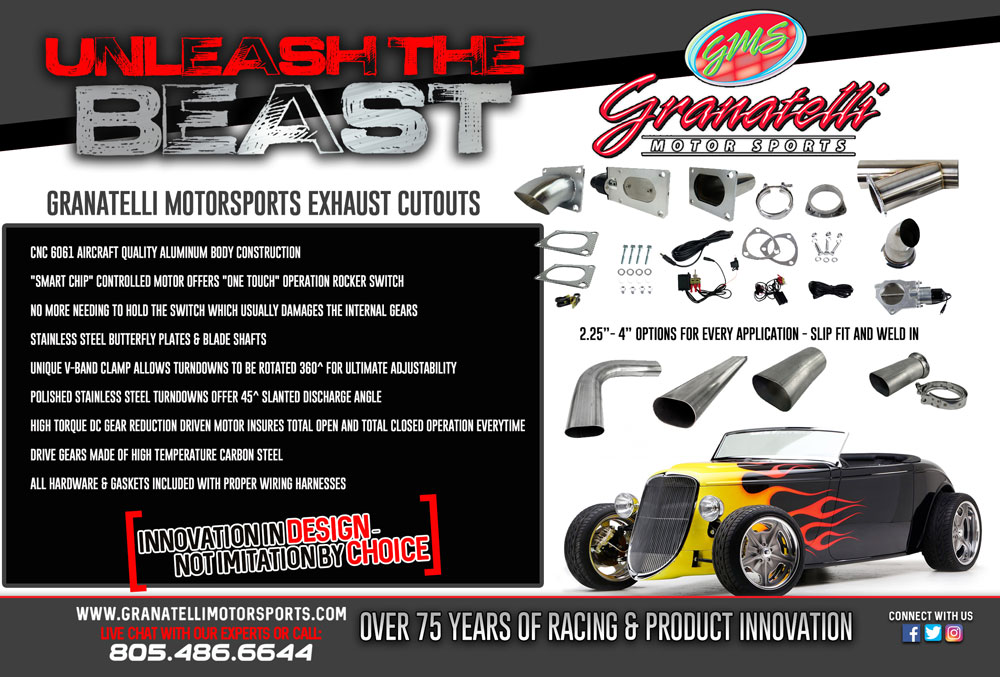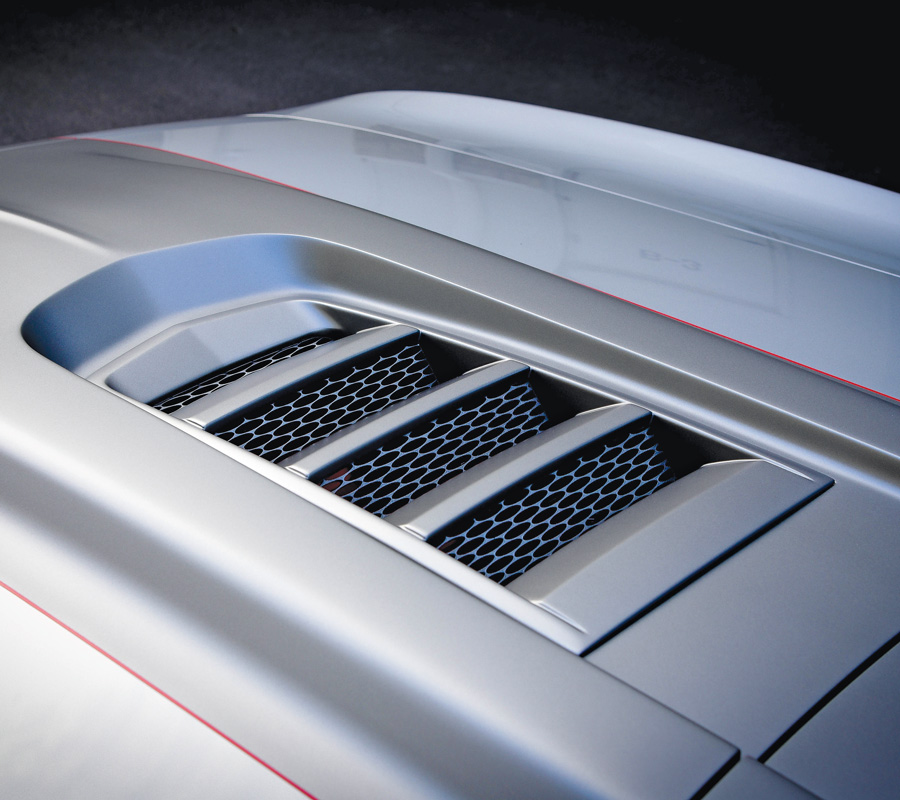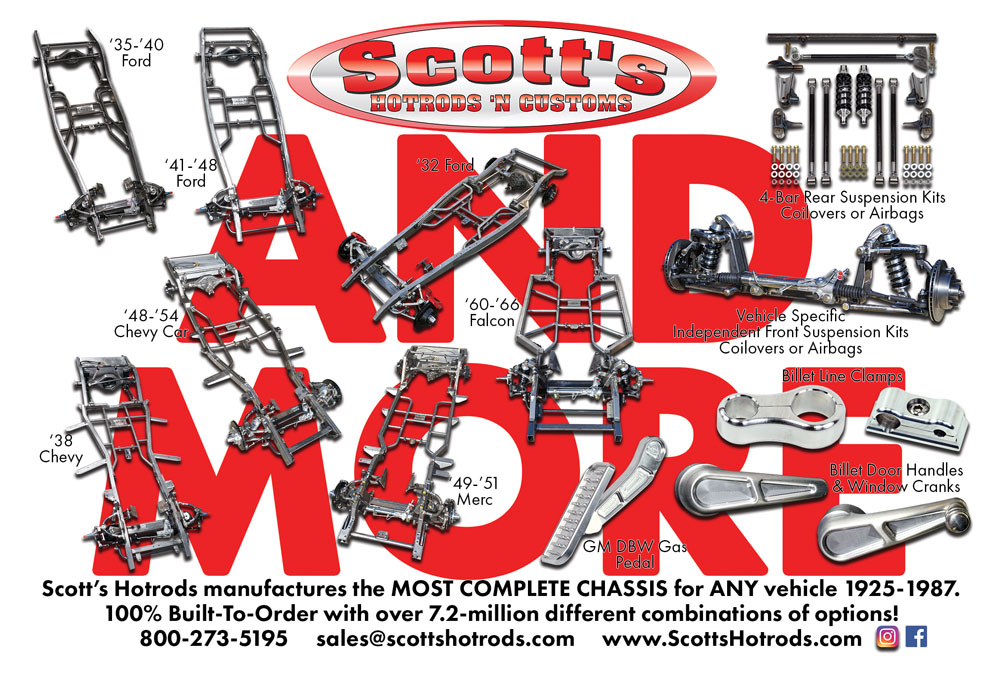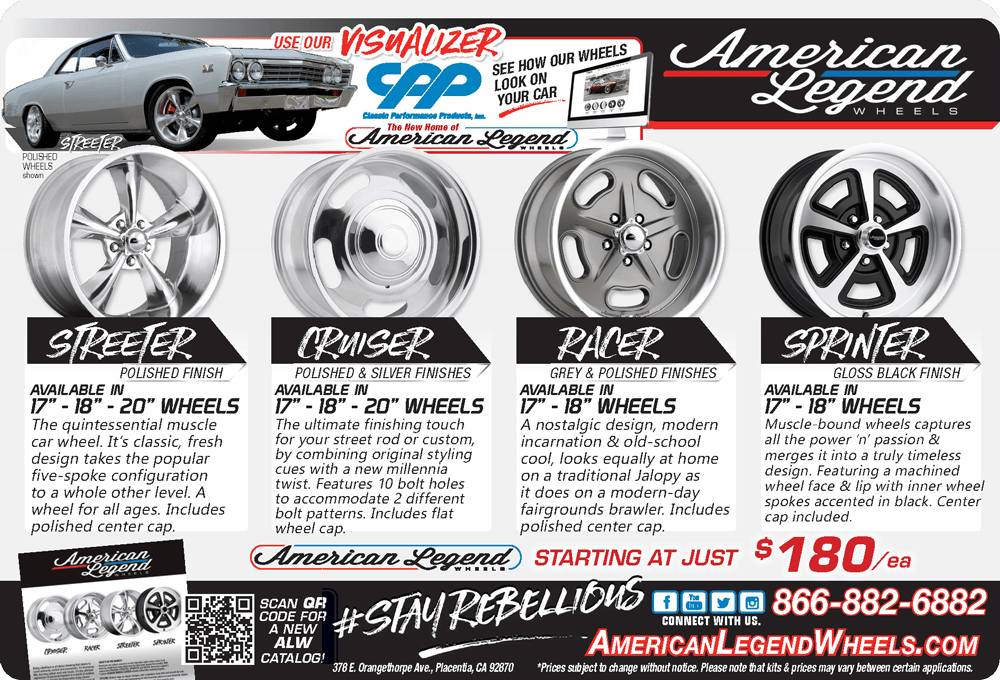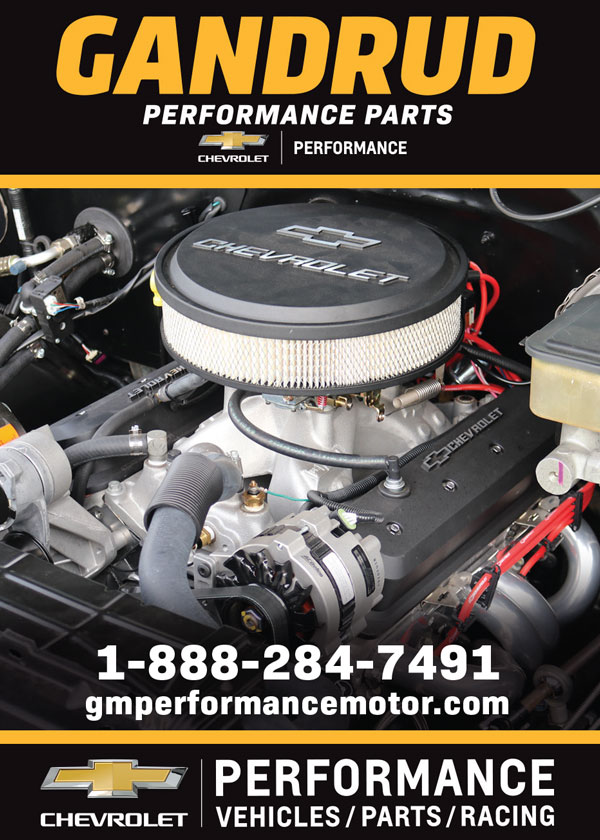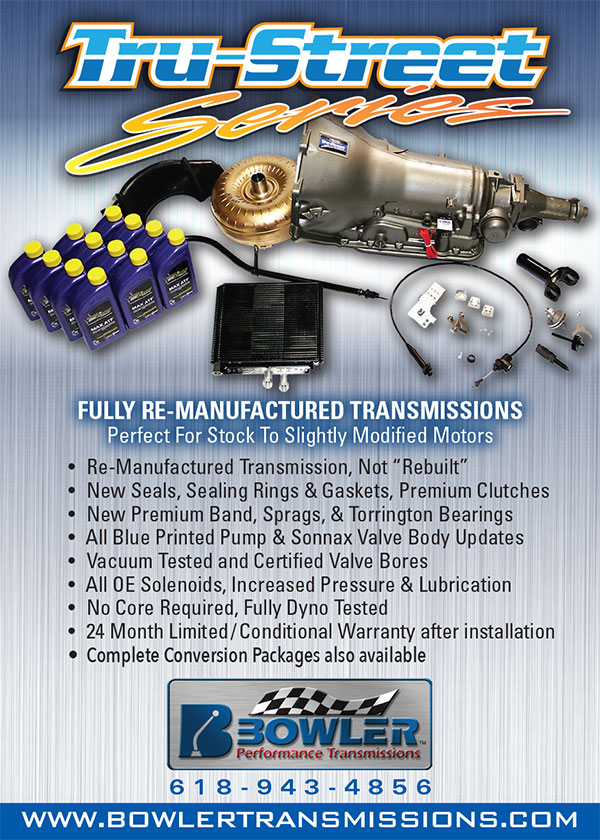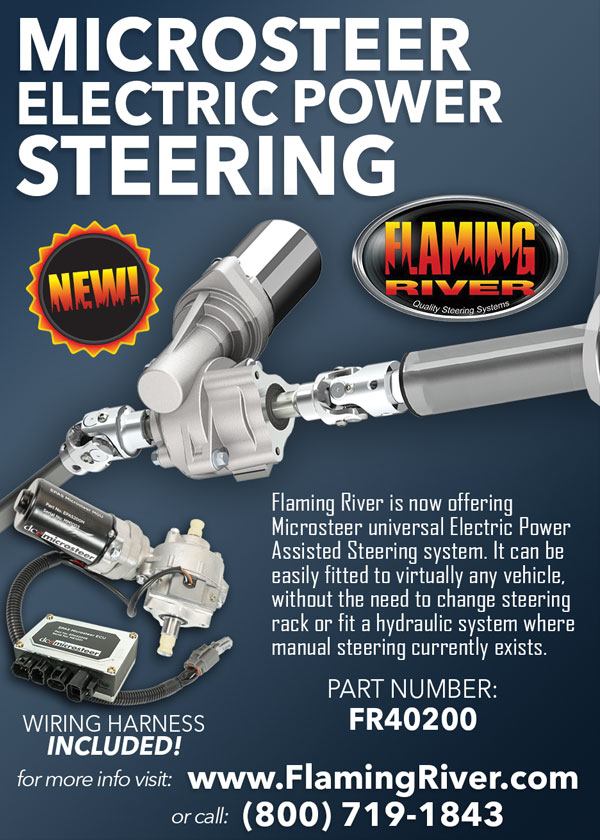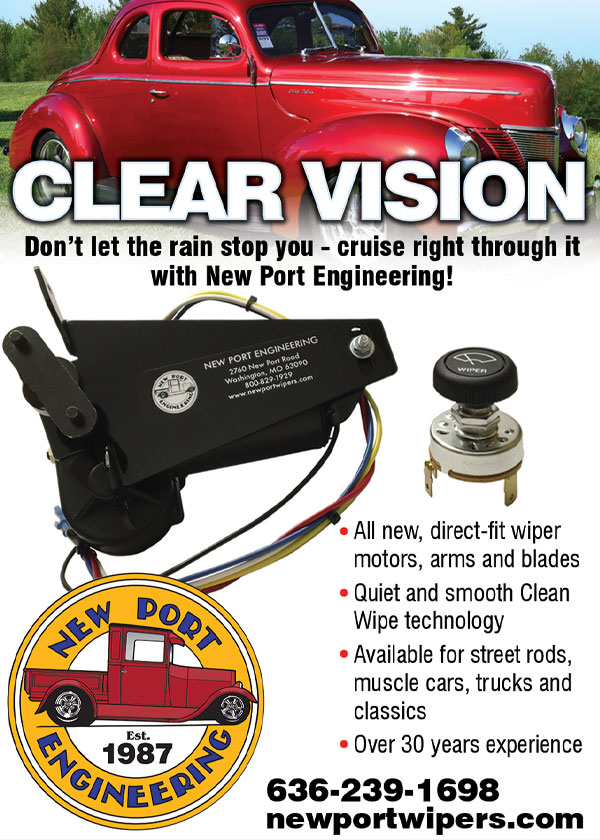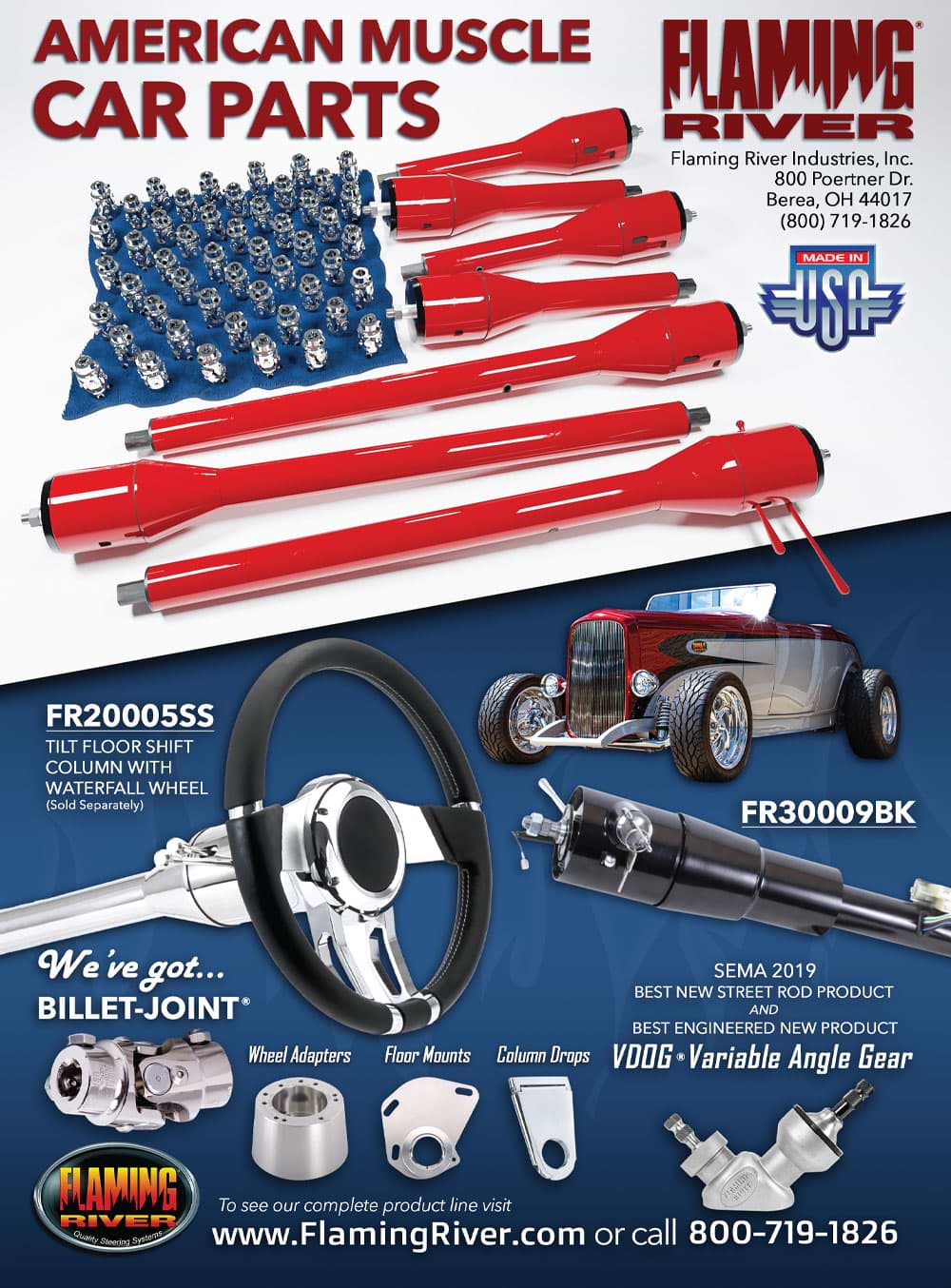


Building The Ultimate 1955 Chevy … And Then Some
36 The Ultimate Plymouth
Kent Ladner’s 1935 Plymouth PJ Has Come A Long Way In 85 Years
54 Firecracker
Great Way To Describe Kristina Plumley’s Blown 1932 Ford Highboy Roadster
74 Rhodium–More Expensive Than Gold
Ryan Gates Unleashes His Pro-Touring First-Gen Camaro As Widebody Perfection
The 1955 Chevy Bel Air, “Brute Force,” owned by Bob Matranga of Southern California, was one of this year’s Detroit Autorama Great 8 finalists and clearly in the running for the Ridler award, but alas it didn’t win. Still, there can be no denying the level at which this Tri-Five is built. Photography by Eric Geisert
We Are Betting That This 1957 Ford Custom Performs A Tad Better Than The One Grandpa Had
42 Stop It!
Speedway Motors’ Kit Is Ideally Suited For Combining Lincoln Large Brakes And Early Ford Spindles
48 Coming Unhinged
Remove Vintage Door Hinge Pins And Never Touch A Hammer
66 Floored!
A Rusty Shell of a 1940 Ford Gets Some Much-Needed Sheetmetal Repair
80 How Hot Is Your Hot Rod?
Basic Tips On Temperature Gauges And Keeping Your Car Cool
84 Double Up
A CPP Brake Booster Kit Solves Two Problems With One Easy Install
The quintessential hot rod is the 1932 Ford highboy roadster. This East Coast version was artfully accomplished by Kristina Plumley, powered by the ubiquitous blown small-block Chevy. Photography by Chuck Vranas
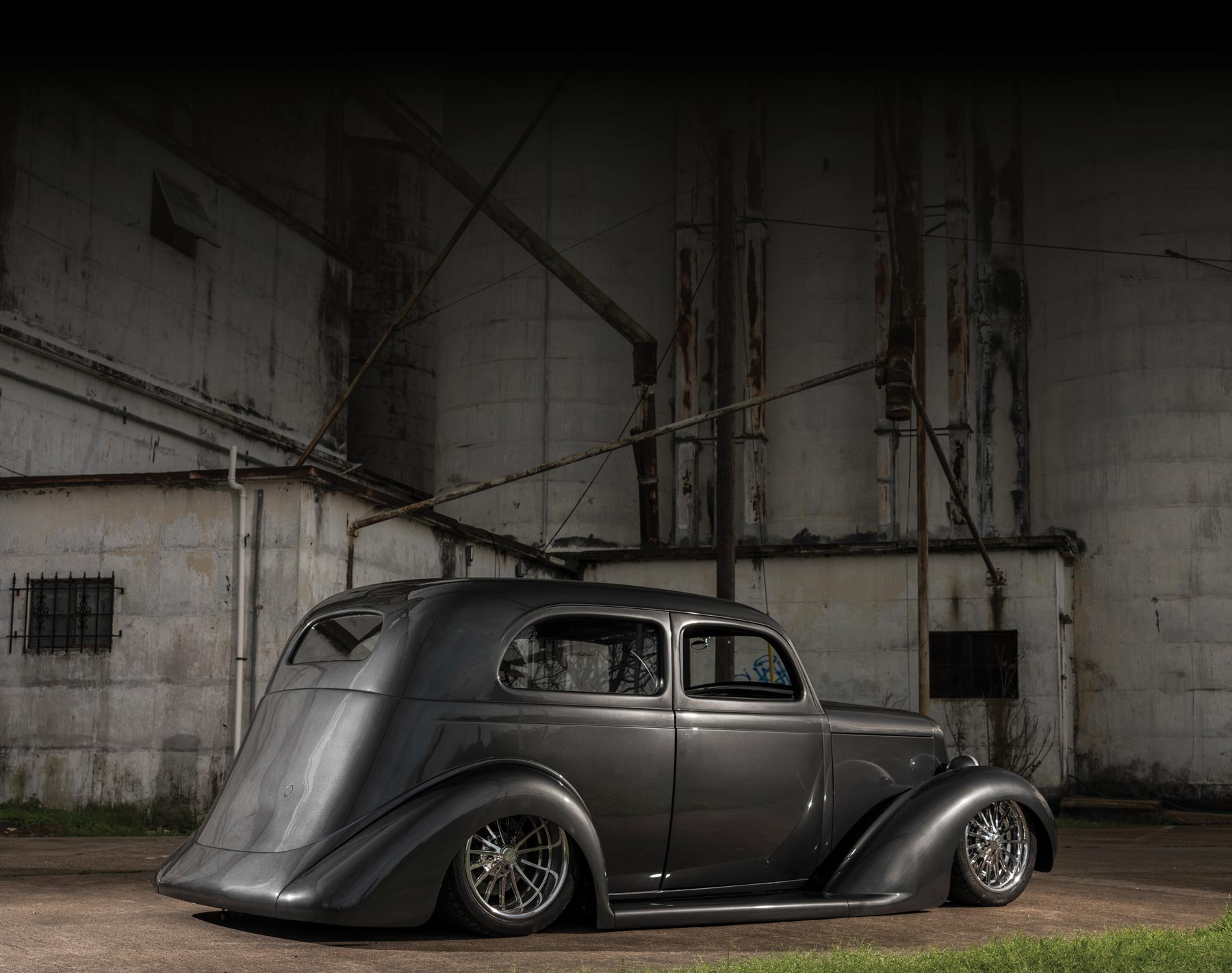

EDITORIAL DIRECTOR / EDITOR
SENIOR EDITOR
PUBLISHER
ASSOCIATE PUBLISHER & OPERATIONS MANAGER
ART DIRECTOR
Sarah Gonzales – Copy Editor
Rodney Bauman, Gerry Burger, Tommy Lee Byrd, Ron Ceridono, Michael Christensen, Ron Covell, Grant Cox, John Drummond, Eric Geisert, Joe Greeves, John Jackson, Barry Kluczyk, Scotty Lachenauer, Nick Licata, Ryan Manson, Josh Mishler, Gary Rosier, Chris Shelton, Mike Slade, Jeff Smith, Tim Sutton, Chuck Vranas – Writers and Photographers
Mark Dewey – National Sales Manager
Janeen Kirby – Sales Representative
Patrick Walsh – Sales Representative
ClassicTruckPerformance.com
ModernRodding.com
InTheGarageMedia.com

All rights reserved. Printed in the USA.
Copyright (c) 2020 IN THE GARAGE MEDIA
The Modern Rodding trademark is a registered trademark of In The Garage Media. Modern Rodding. July/August 2020, Vol 1, No 1 is published bi-monthly by In The Garage Media. 1350 E. Chapman Ave. #6650, Fullerton, CA 92834-6550
ISSN 2692-2371
PRINTED IN U.S.A.


ou do something enough times and it becomes “familiar.” Take off your favorite sweatshirt and you find yourself looking for it. Pretty soon you begin to think about wearing those comfortable Levis when you don’t have them on! Your hot rod is no different. I’ve had my roadster on the road for 14-plus years. During this time, the roadster has assisted me in making countless friends for which I am eternally grateful.
Over the course of time I’ve changed very little on the highboy: a set of wheels and tires and freshened up the brakes. (Although I can’t say the same for myself.) I can tell you every time I drop behind the wheel there’s a certain “feel” and “comfort” that overcomes me. It’s my favorite jeans, sweatshirt, and Barcalounger all rolled into one. There’s no mistaking the bond between myself and my roadster.
The time has come where I find myself putting aside one magazine for another. Let me tell you that the old one (Street Rodder) had a feel I had grown comfortable with and thoroughly enjoyed. When I think back, I can remember sitting in LeRoi “Tex” Smith’s office talking about what it would be like to have a “hot rod” magazine. Those one-on-one conversations would go on for hours and each dream became grander than the one before. Those dreams gave birth to a rodding magazine that was a half a year shy of half a century of service to the hobby and industry many of us grew up with and shared.

And Beyond
ecember 2019 will forever go down in history for many—including myself, without a doubt—as the end of an era … the end of a magazine era as we knew it. But rather than cry over spilled sour milk and write the last chapter, as it were, myself and a few other would-be (should-be) bitter old magazine veterans took the high road to start the next chapter of hot rodding periodicals—print and digitally speaking.
It only took a quarter-century to figure out on behalf of the corporate world where we’d gone wrong all these years, and by eliminating the bureaucratic decision-making factor we had no other option but to go out on our own and once and for all make a magazine the right way—a print magazine AND a digital version … heavy emphasis on the latter.
I’ve been doing this whole magazine thing for literally half of my life—as have my fellow “garage mates.” It’s what we know; it’s what we do. So, when that fateful day in December came and the life we knew virtually came to a halt, the thought of not having the ability to continue that life as we knew it was too much to bear. That is, until we stepped back and remembered where it all began—in the garage—could we truly understand that’s exactly where we needed to be in 2020.

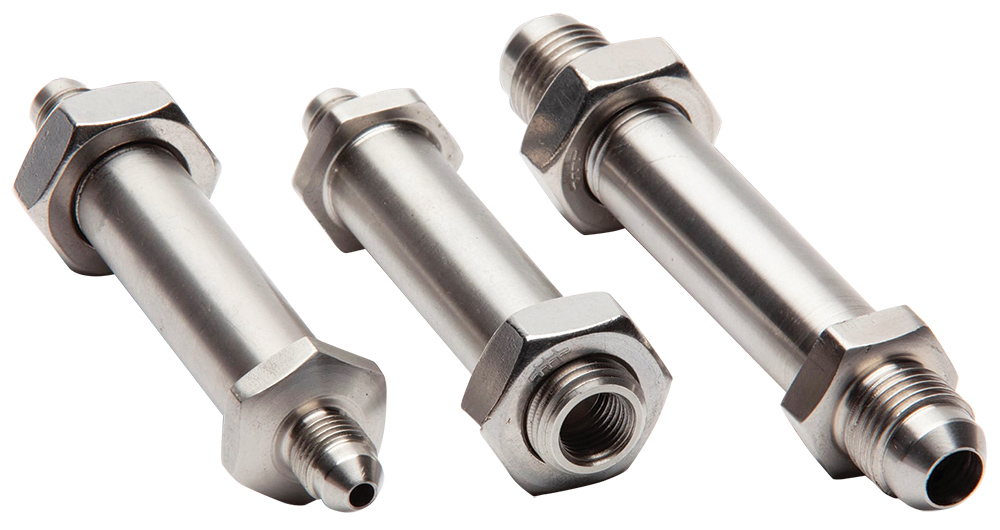
Art Morrison Enterprises (AME) has produced these bulkhead fittings for a while but they never get old, and now might be the time to get out in the shop and see if you can not only solve a problem but also enhance your hot rod’s look.
These bulkhead-type fittings are designed for use with standard 2-inch-wide framerails and available in three configurations: -3 AN male/-3 AN female, -3 AN male/-3 AN male, and AN-6 male/AN-6 male.
These fittings are manufactured in-house by AME from premium stainless steel material, making these fittings impervious to rust and corrosion.


Classic Instruments now offers this series in all-new size offerings of 2-5/8 inches (fuel, oil, temperature, and volt), while the speedo and tach are available in 3-3/8 and 4-5/8 inches. All Classic Series instruments are available as individual instruments or as part of a five- or six-gauge set. The series features polished stainless steel radial bezels, curved glass lenses, nostalgic crescent moon pointers, and rich black dial faces.
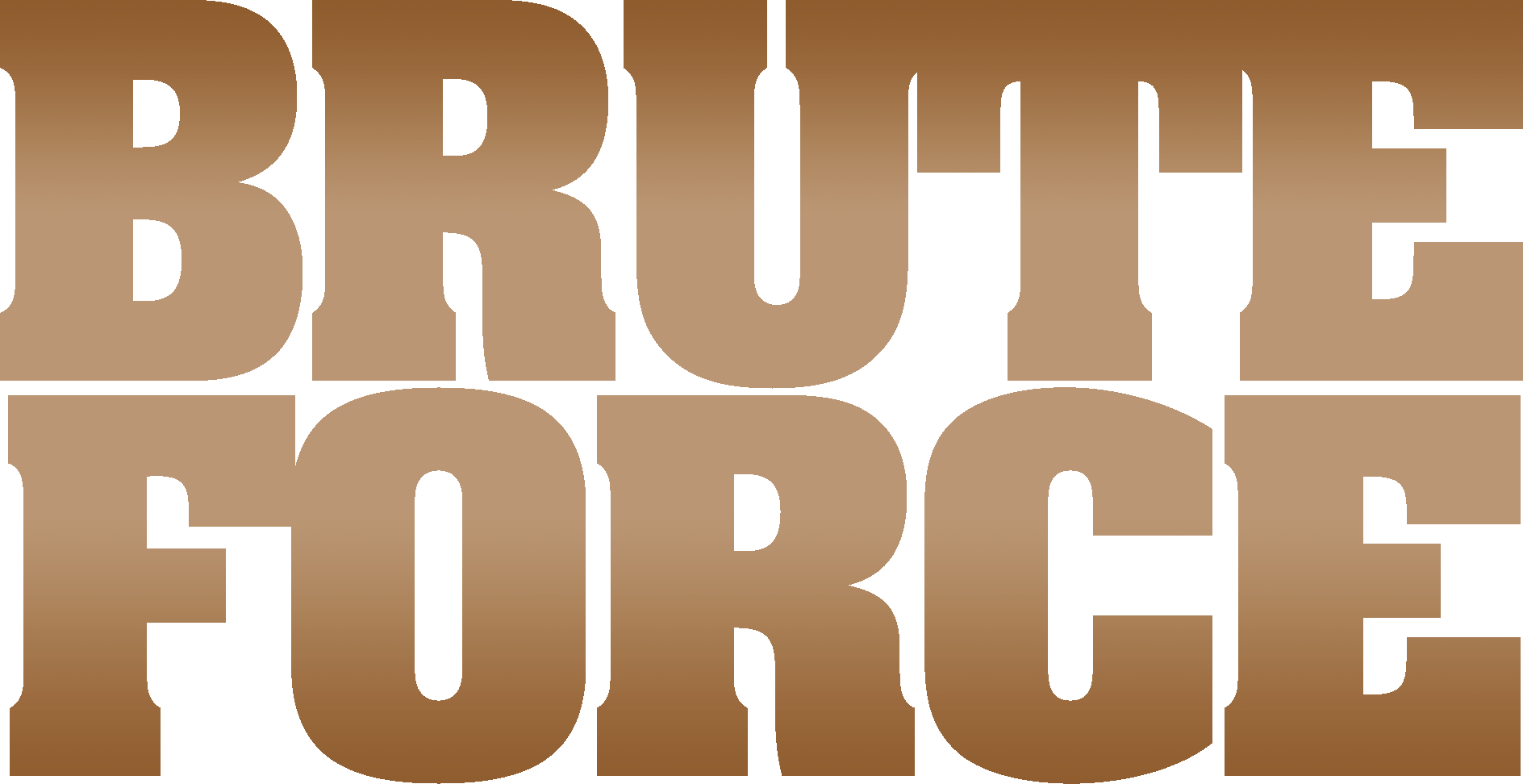
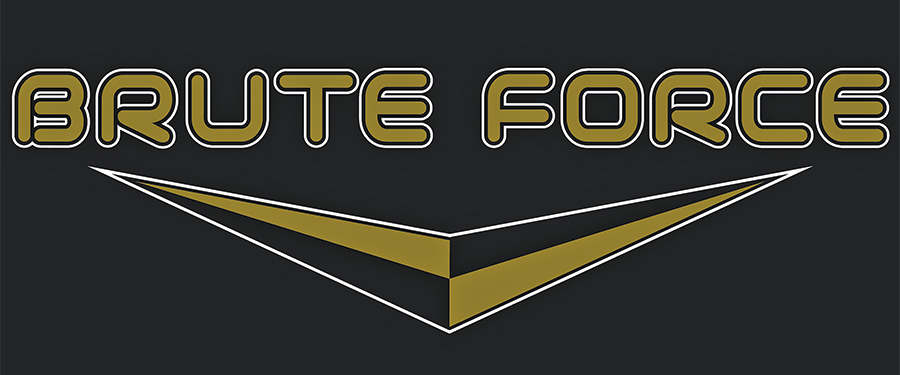
he idea started off simple enough for Bob Matranga. “Some people like to play golf; I like to build hot rods,” he says. “I enjoy showing these cars, I enjoy driving these cars, and that’s what’s driven me all my life.” But if building, owning, and driving a hot rod are at one end of the spectrum, then seriously competing in a car show setting for one of the nation’s highest honors in that field is something else.
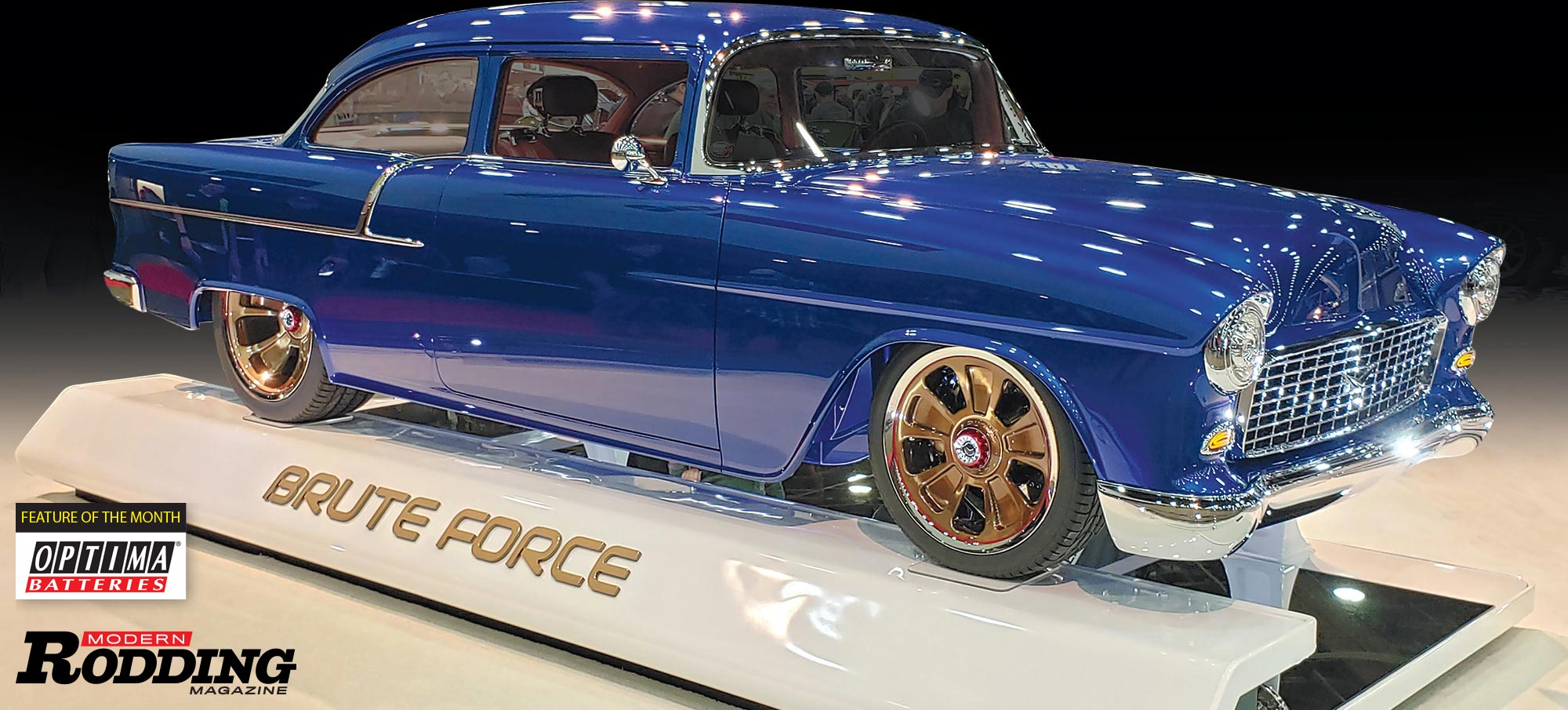

he idea started off simple enough for Bob Matranga. “Some people like to play golf; I like to build hot rods,” he says. “I enjoy showing these cars, I enjoy driving these cars, and that’s what’s driven me all my life.” But if building, owning, and driving a hot rod are at one end of the spectrum, then seriously competing in a car show setting for one of the nation’s highest honors in that field is something else.


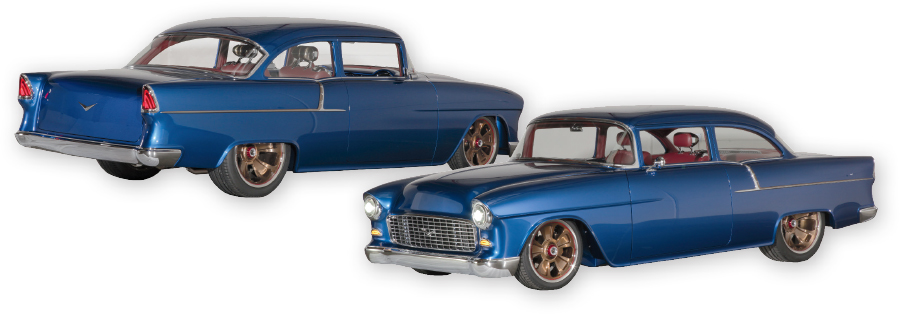
When Bob bought a Bel Air project years ago, all he wanted was “a real nice 1955 Chevy” with full independent suspension and a big motor. So, the chassis was sold and the body fitted to a new Art Morrison chassis with a Kugel Komponents IFS/IRS setup.
But Bob’s natural inclination to refine something until it’s “right” eventually led him to the idea that he’d like to compete for the Don Ridler Memorial Award at the Detroit Autorama. Easily one of the highest honors in the customized automotive world, the Ridler “emphasizes creativity, engineering, and quality workmanship. The vehicle that best represents those three areas will win the Ridler Award.” It’s really the ultimate challenge: to be recognized as the best in a group of exceptional vehicles.
Bob had taken his ride to some shops in the SoCal region that couldn’t perform the tasks he wanted—though they happily cashed his checks. Fed up with the lack of service, he formed Matranga Hot Rods, his own personal shop that would focus on the construction of this one automobile.
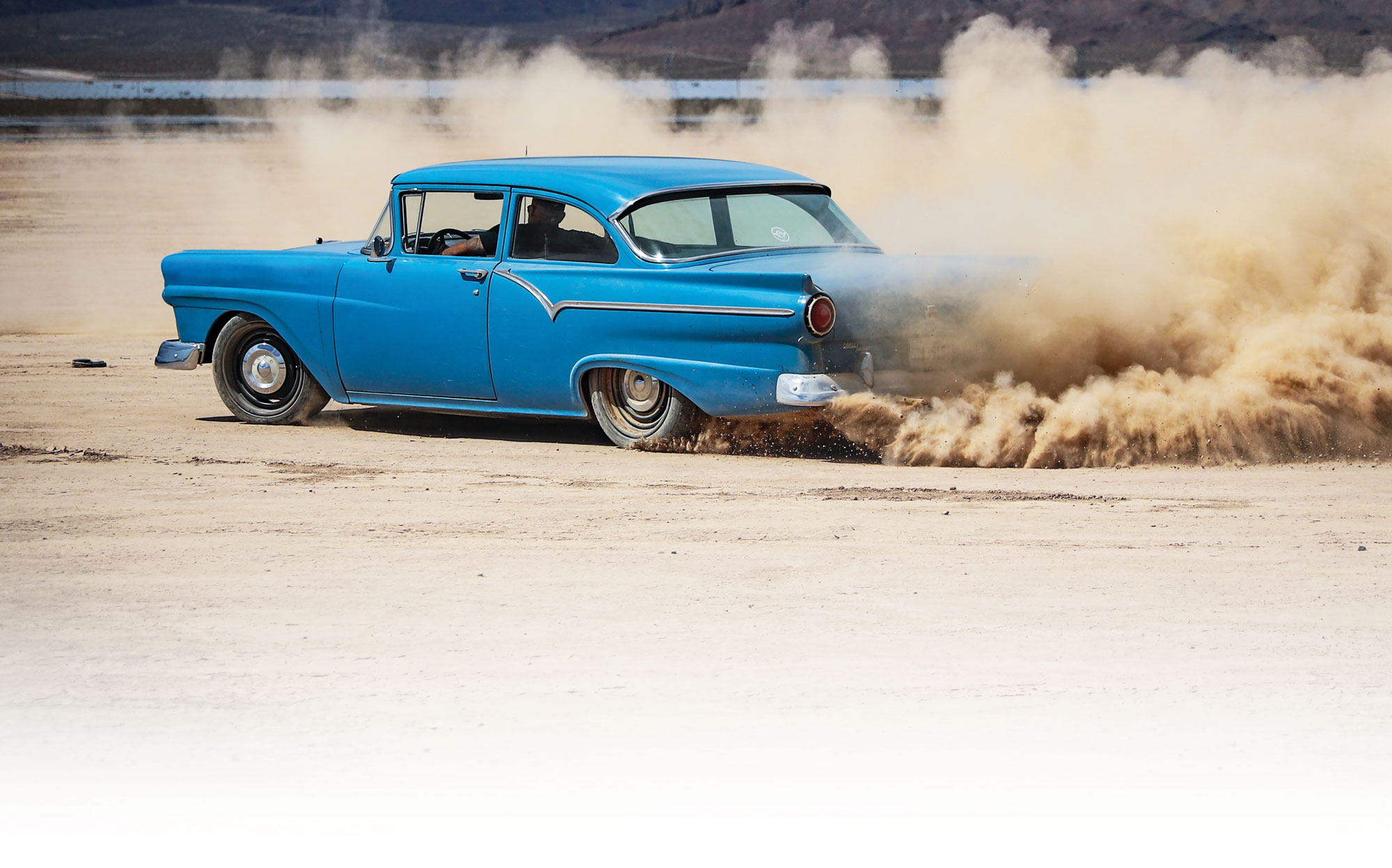

he tale of one car with 2-1/2 stories; one is technical, one is a feature, and the remaining is a bit of human interest. All of us have our reasons for why we build our hot rods the way we do. And, frankly, it doesn’t really matter to anyone other than ourselves why we build, what we build, or how we build it. The goal for all of us is to have fun with cars along the way.
George Poteet (member of the Memphis Street Rods) has pieced together many a project during his transition into “hot rod adulthood.” (I checked, by definition “hot rod adulthood” starts at prepubescence and we never outgrow it.) One of George’s all-time favorite rides is his 1957 Ford Custom two-door sedan that meets his hot rod adulthood goals. He has owned this particular Ford for 20-plus years and it also reminds him of one that his grandfather once owned in the same color. Given this 1957 Ford has lots of miles under its oil pan, George gave it some thought and decided it was time to upgrade. (This isn’t his first one. He had one many years ago fitted with a Ford 427 Cammer motor.) In his mind the current “upgrade” meant from bumper-to-bumper but beneath the patina’d sheetmetal. During the build he threw in a few enhancements readily accessible while driving, thereby yielding the perfect road car.
George tells us, “I really like this car and want to make long trips and cruise around.” We’ve surmised that he likes driving and from what we’ve seen of this 1957 Ford Custom as it continually racks up 10,000 miles a year we would agree. He drives it often and hasn’t hesitated for one “asphalt divot” from jumping in and taking off from the South to the West Coast attending rod runs along the way.

Photography by John Jackson

irst some history on the 1935 Plymouth PJ, as we’re going to take a guess hot rodders haven’t seen many of these over the years and most assuredly not one done to this level of excellence. Kent Ladner out of Katy, Texas, definitely took this once businessman work vehicle to new heights, but here’s a little background.
For the 1935 PJ model line there were advancements in water cooling as well as the ignition (now Autolite); add these changes, along with a rise in engine compression, and now the same displacement engine (six-cylinder, 201 ci) from 1934 featured a horsepower jump. In fact, in 1935 there were two versions of the six-cylinder: the basic powerplant at 65 hp (5.1:1 compression) and the upgraded motor at 85 hp (6.7:1 compression). Couple this power along with major suspension improvements and now Plymouth had a car that would run 80 mph.
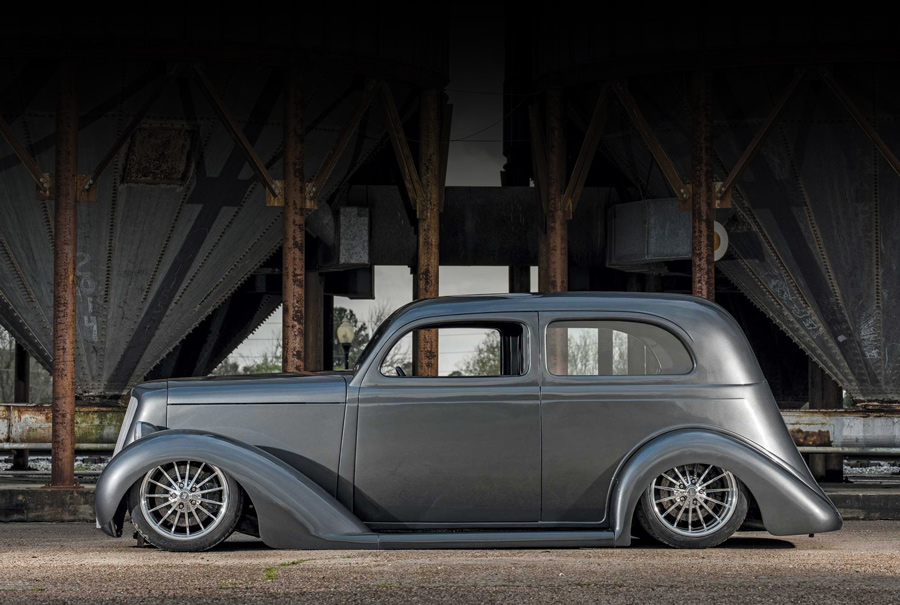
We asked Kent for some input on where he got his Plymouth and a bit about the journey and here’s what he told us:
“The car was just a rolling chassis and body when I bought it. One of the front fenders was caved in, and one of the rear fenders was bent up pretty badly. As soon as I got the car home I started cutting it up, repairing the rust in the rockers, doors, and lower rear sections. Next, I removed the floor and took everything off the frame but the two ’rails. From here I designed the front suspension after S-10 geometry, coupled with a Mustang rack-and-pinion steering using a drop link to mount the S-10 inner tie rods. The goal was to reduce bumpsteer. In the rear I narrowed the frame 5 inches, notched it for clearance, and used an Ekstensive Metal Works two-link with track bar. Once I had the foundation handled, I moved onto the body.

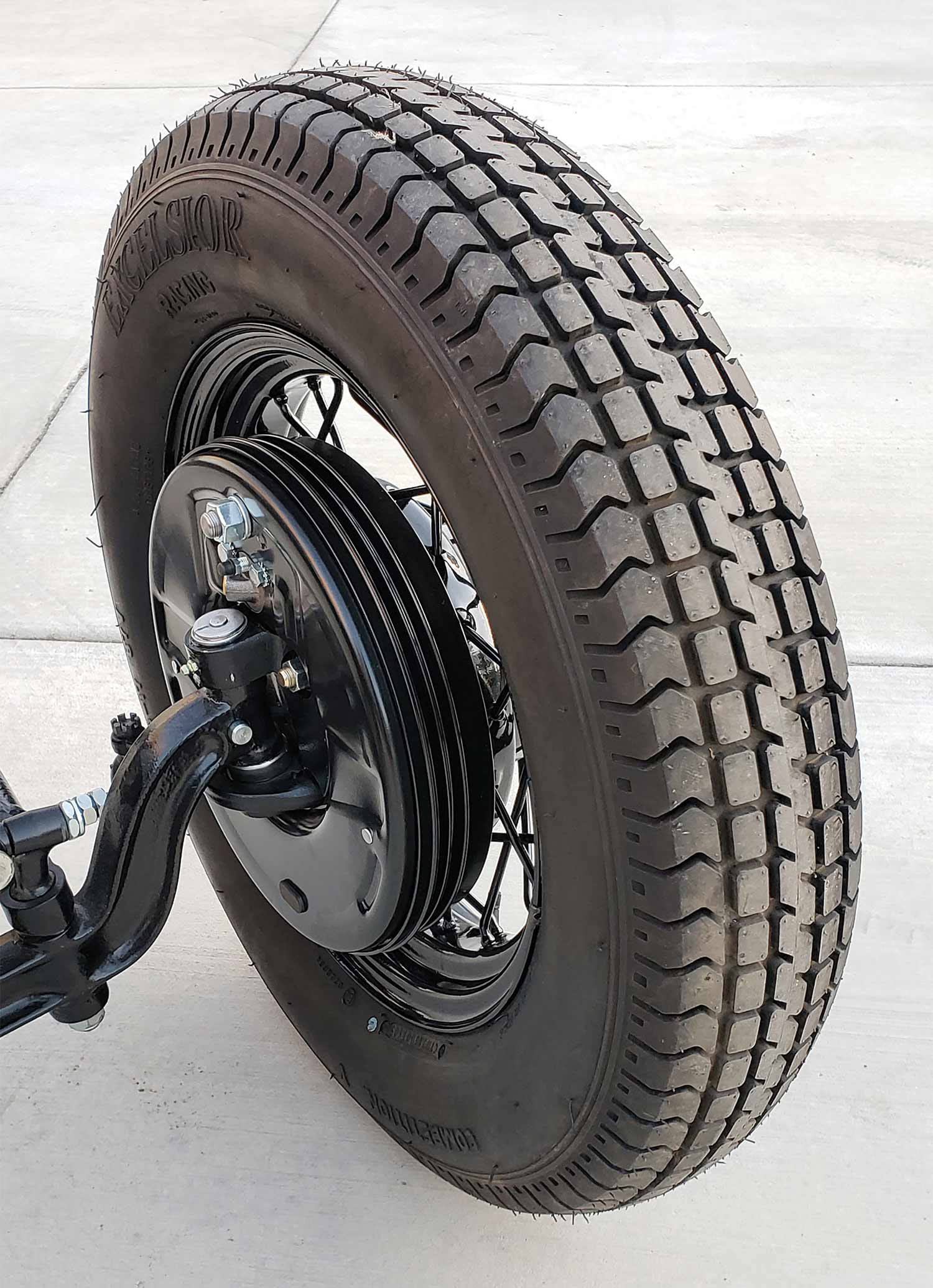
aking stuff work together when it wasn’t originally designed to be is the cornerstone of hot rodding, but doing that is often more than half the challenge. Step in Speedway Motors and their Lincoln front brake kit for early Ford spindles.
For many years, if someone wanted to use 12×2-inch Lincoln drum front brakes (mostly because the brake shoe is 1/4-inch wider) they had to cobble something together, and if you were using 1937 – 1941 Ford spindles (the ones with the round, not square, back) then you had to bust out the heavy grinder and attack the top of the spindle so the Lincoln backing plate would fit flush. Up until just recently, that was how it was done.
Speedway Motors has recently expanded their line of hot rod brake systems and parts to be more friendly to the needs of a traditional hot rodder who wants the vintage look without having to resort to using possibly stressed-out 80-year-old parts. Speedway saw the need for a simpler approach and began manufacturing forged spindles that have that clearance already precision milled into the piece, saving hours of work grinding to achieve the desired result. And they offer several “kits” that group all the needed parts together, making ordering a snap. The only non-Speedway parts used for this build was a pair of Super Bell steering arms from Pete and Jakes.

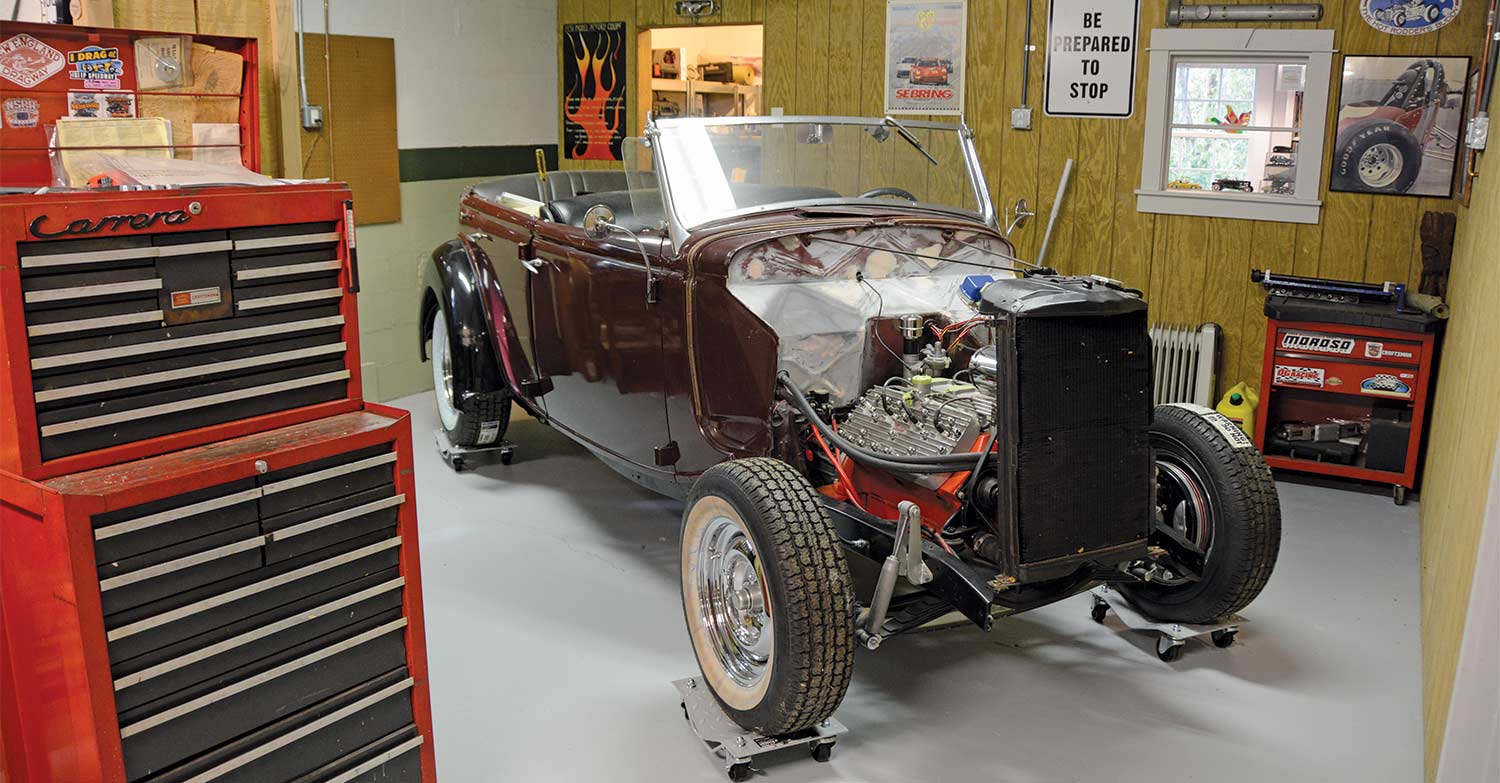
uilding a hot rod involves a myriad of mundane jobs. While this work may not show in the end, they are essential to moving a project along but can also present challenges along the way. One such task is removing the doors from a 1936 Ford phaeton. Now, phaetons aren’t exactly the most rigid body ever produced, and when you factor in the wood-framed doors and A- and B-pillars these bodies can be downright flimsy.
Our project car is a good, solid example and the wood appears to be in very nice condition. The doors all fit reasonably well with typical factory gaps. While the wood appears good, we felt it was wise not to attempt to unbolt the hinges from the A- and B-pillars, as disturbing those mounting points could lead to major problems. If you don’t unbolt the hinges from the body the only other way to remove the doors is to remove the hinge pin and separate the hinge. That sounds simple enough, but we are quite certain our phaeton has never had the doors removed in its 83-year history. We expected them to be stubborn, and as it turns out we would not be disappointed.
Once again, due to the structural shortcomings of a phaeton body, we knew hammering the hinge pins out was not an option. So we decided what we needed was a hinge pin press. No, it’s not the latest fitness craze, rather it is a small mechanical press we fabricated to effectively jack the pins out of the hinge.
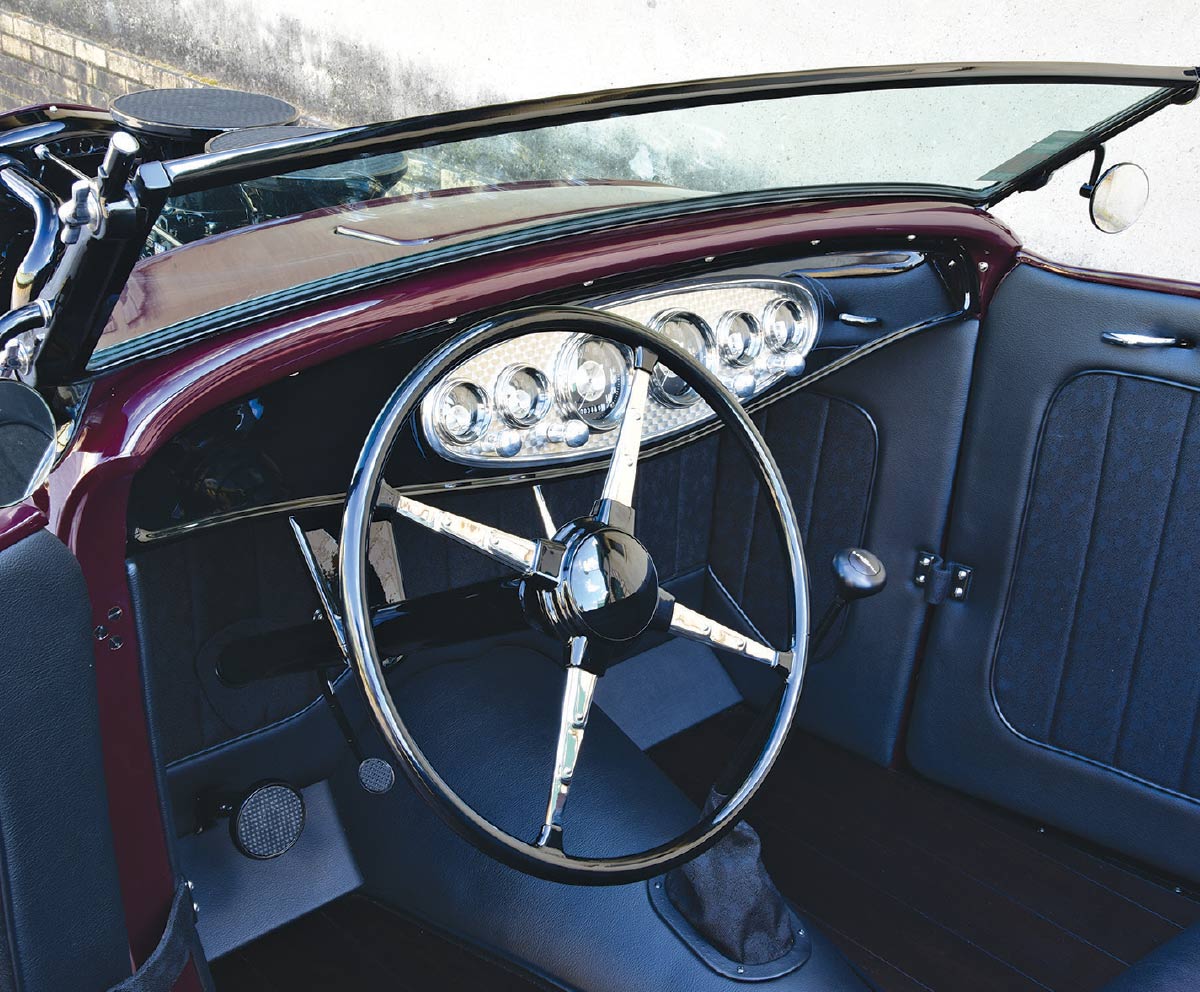
here’s nothing more badass than the sounds of a hot rod thundering down the road packing a hopped-up V-8 fused with the combined whine of a supercharger and quick-change rear to create the ultimate moment in time. It may have taken Kristina Plumley of Middletown, Delaware, a little while to get in the driver seat, but the journey was well-worth the wait.
Growing up in Beckley, West Virginia, her earliest automotive memories started while sitting on a milk crate in her dad Carl’s gutted 1941 Oldsmobile. While clutching the tattered steering wheel, she’d often gaze out the panoramic windshield imagining what it might have been like wheeling the car through the local town streets.


here’s nothing more badass than the sounds of a hot rod thundering down the road packing a hopped-up V-8 fused with the combined whine of a supercharger and quick-change rear to create the ultimate moment in time. It may have taken Kristina Plumley of Middletown, Delaware, a little while to get in the driver seat, but the journey was well-worth the wait.
Growing up in Beckley, West Virginia, her earliest automotive memories started while sitting on a milk crate in her dad Carl’s gutted 1941 Oldsmobile. While clutching the tattered steering wheel, she’d often gaze out the panoramic windshield imagining what it might have been like wheeling the car through the local town streets.
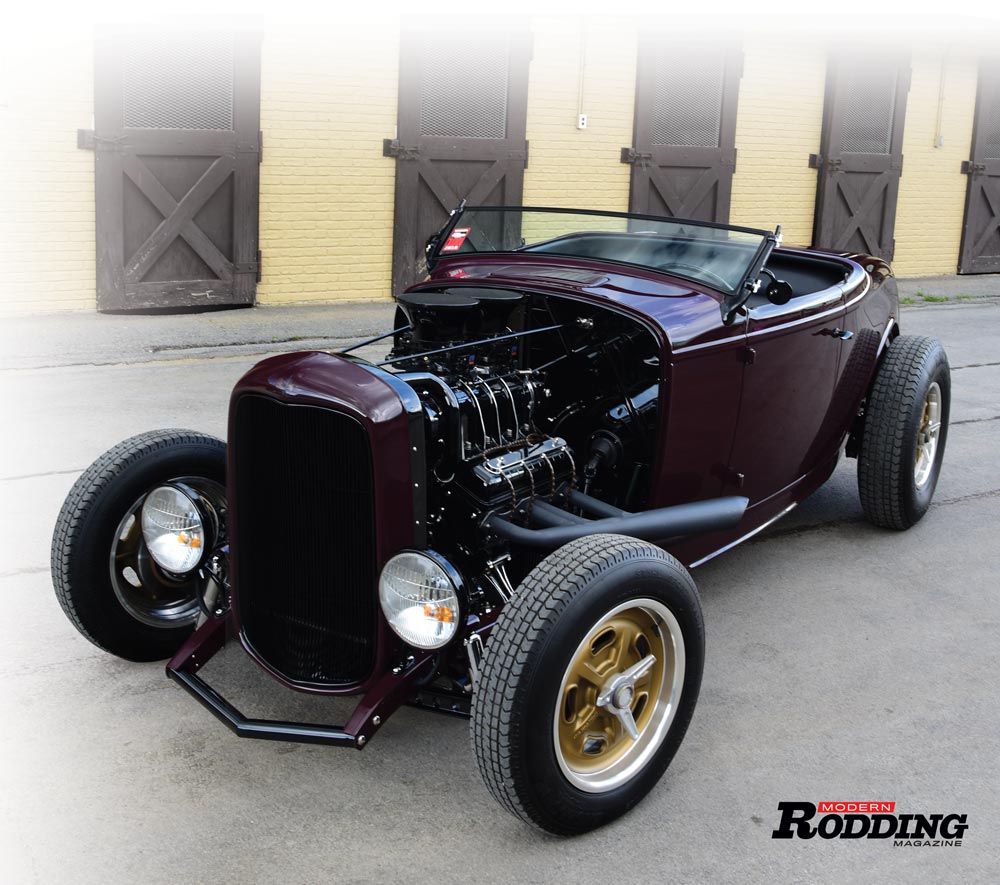


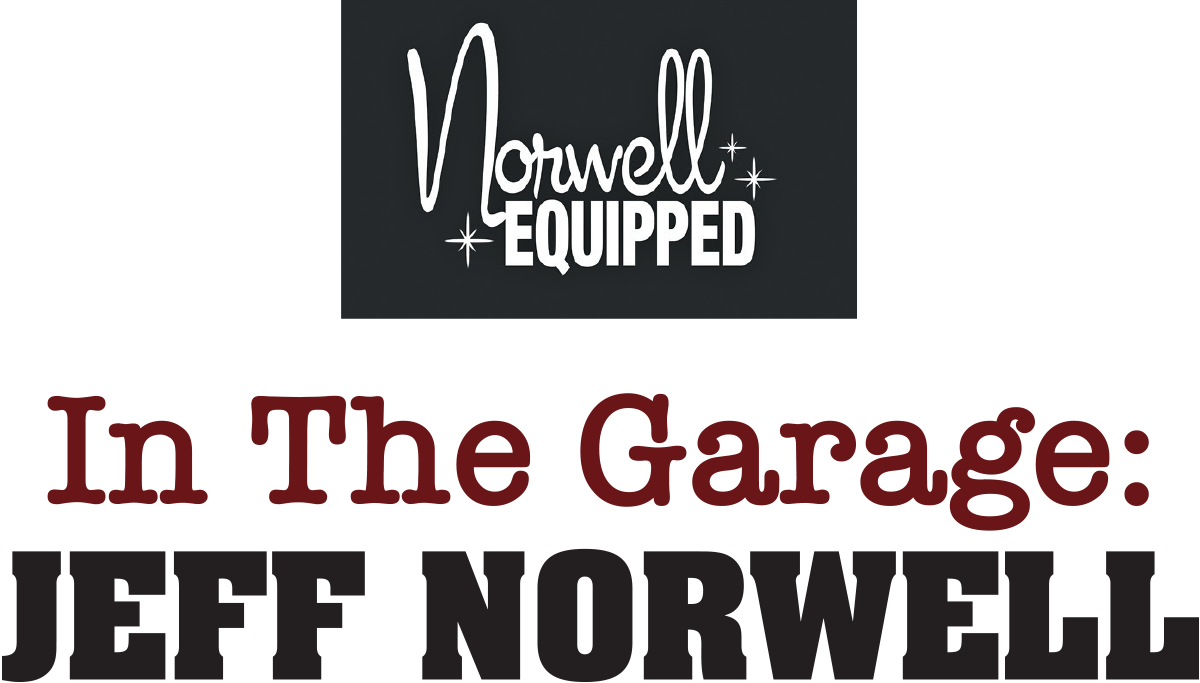
Photography by Jeff Norwell
ur In The Garage Series begins with Jeff Norwell, a fulltime hot rodder, illustrator (you’ve seen his work and may not have even realized it), and a Canadian who can’t get his fill of hot rods. He lives in Neustadt, Ontario, Canada, and oftentimes can be seen working and enjoying the Jalopy Jam Up Hot Rod and Custom Show in the Frontier Ghost Town above the confines— that’s the U.S. and Canadian border. (For reference, Norwell lives two hours north of Buffalo, New York.) He’s also a member of the Infidel Car Club.
We mention that he’s a fulltime artist and his work you’ve seen in the likes of rodding magazines from years past. (You will also be seeing his work in the future in Modern Rodding, but more on that later.) His talent takes him far from the hot rod crowd, as he has national accounts not only in Canada but here in the States as well. Most of his hometown rodding buddies, and those of us on this side of the “border”, recognize him as one of the rodders behind the scenes of the Jalopy Jam Up.
Aside from being oh-so cool (Jeff, I know you are grimacing now!), Norwell also has a home garage any rodder, north or south of the border, would be proud to show. Not only is the garage very cool, as buildings go, but the memorabilia is eye-grabbing cool, and this doesn’t even begin to do justice to his four hot rod projects resting beneath the roof.
We asked Norwell to give us a “hot lap” around the garage and tell us a little something about the hot rods, so here it goes.

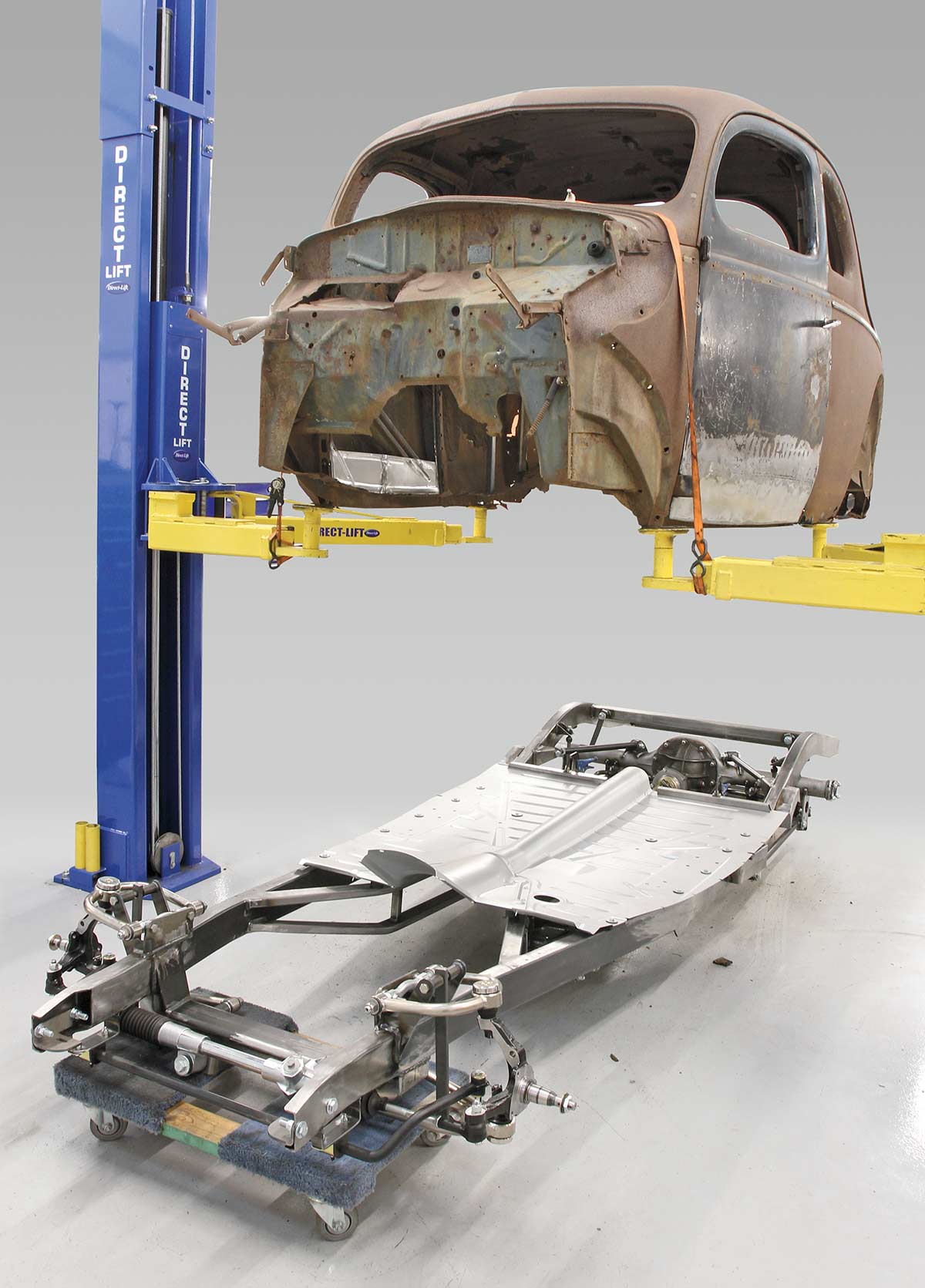
et’s face it, we’ve come to the time in hot rodding’s long history where it’s very rare to find an unmolested early Ford body that doesn’t need a ton of sheetmetal repair work. Sure, there’s the random “barn find” that surfaces from time to time, but the majority of prewar cars that haven’t seen the road in a half century or more are gonna need a lot of TLC. My 1940 Ford coupe is in need of a new replaced sheetmetal floorpan.
Purchased on a lark after my dad forwarded me a link to an online auction, my interest was piqued more out of curiosity than of acquisition. After noticing, on the last day of the auction, that bidding had stalled back on the second day, I thought, “I’ll bid it low. What’s the worst thing that could happen?” Well, the result may not have been the worst thing, but it wasn’t what I was expecting. I won the auction and now needed to get said hunk o’ rust from Wisconsin to California—and STAT as winter was coming quick.
As one is wont when buying a car sight unseen, I carefully inspected every image and decided that worst-case scenario, if I had to simply cut my losses, I could most likely part the car out and break even. That said, I figured that there had to be enough sheetmetal worthy of repair that that situation probably wouldn’t be the case. A few weeks later, when the car arrived on my doorstep, I was pleasantly surprised at the condition of the coupe.
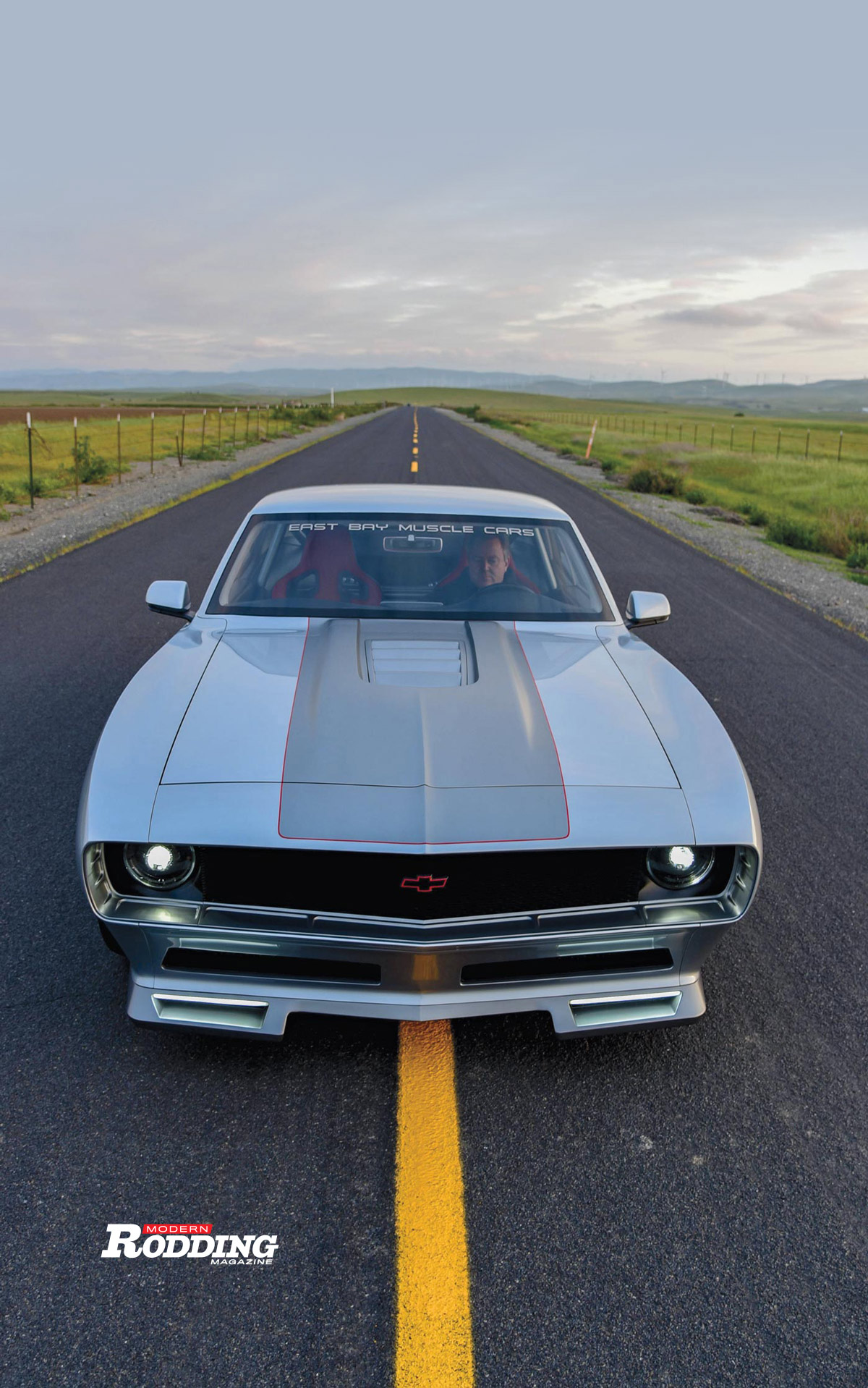

hodium, atomic table element #45, is a silvery-white metal found with Platinum and is more expensive than gold. It is now well represented in this 1968 Camaro widebody, designed by Steve Keefer and Ben Hermance for owner Ryan Gates. Rhodium is the latest offering from Keefer’s East Bay Muscle Cars’ (EBMC) 6,000-square-foot shop in the fertile farming community of Brentwood, California. EBMC specializes in muscle cars and pro-touring machines exclusively. The rides that emerge from this forward-thinking team are perfectly balanced, feature razor-sharp lines, perfect gaps, plenty of power, and racy interiors.
In May of 2007, not many people had heard of Keefer’s EBMC. That changed 30 days later when Keefer cruised his fresh 1970 Ford Mustang Mach I through the gates of the Goodguys Summer Get-Together at the Pleasanton Fairgrounds in Northern California. It was EBMC’s debut build. The deep maroon pony, perfectly “stanced” on a set of brushed Budnik wheels, raised plenty of eyebrows. It was a harbinger of pro-touring cars to come from the creative minds at EBMC.


here’s nothing worse than driving a hot rod with one eye on the temperature gauge while living in fear that any minute steam will be boiling out from under the hood and there will be the dreaded green river of death pouring onto the asphalt.
Overheating an engine comes with consequences that can vary from the minor annoyance of the mess that burping out coolant can make to budget-busting catastrophic engine damage. But then sometimes the fear of overheating is more of a problem than the engine’s actual operating temperature. The first question to ask is, “How hot is too hot?”
Due to the composition of today’s fuels, 180 degrees is considered the minimum operating temperature for efficient combustion and is ideal for vintage engines on the street. Most experts agree that 190 degrees is a safe operating temperature for modern engines; and for contemporary fuel-injected crate engines, 195 to 220 degrees is considered the norm.

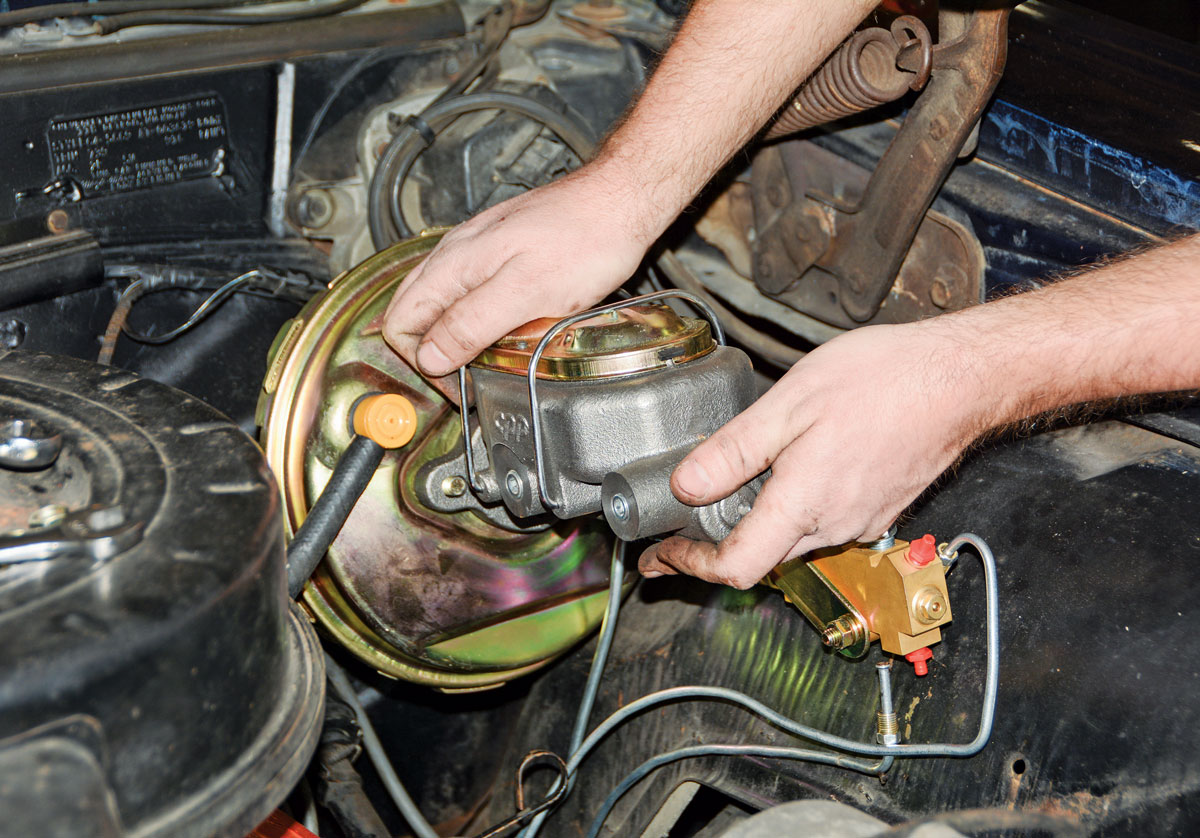
or decades we trusted single-reservoir master cylinders on our daily drivers and our street rods, but the thought of evacuating all of your brake fluid due to an aging or faulty wheel cylinder, brake hose, or brake line issue is frightening. Our 1964 Chevelle was built toward the end of the single-reservoir era, as dual-reservoir master cylinders would become the industry standard just a few years later. The same principles apply to many popular platforms, such as the Tri-Five Chevy and pretty much any car or truck built before 1967.
The braking system on our Chevelle project car never gave us any signs of failure, but for safety purposes we decided to proactively upgrade our master cylinder. Classic Performance Products (CPP) offers a kit that not only converts the car to a dual master cylinder, but also converts it to power brakes. The brake booster offsets the increased pedal effort from the larger bore inside the master cylinder.
We used a CPP master cylinder kit (PN 6474BB2), which is a direct bolt-on kit for cars using disc brakes up front and drums out back. The kit includes a cadmium-plated brake booster (you can choose the size but we went with the 9-inch booster), brackets for bolting directly to your stock firewall, a new dual-reservoir master cylinder, pedal pushrod and clevis, pre-bent hard lines, and a new proportioning valve and bracket assembly. One additional item that makes this installation easier is a new hard brake line kit. In the case of our Chevelle, we used a Right Stuff kit from Summit Racing (PN COP64H2), which works for 1964-1967 Chevelles with power disc brake conversions. Overall, our brake booster and master cylinder upgrade only took a few hours (most of which was spent installing the new lines), and set us back about $400, including the new brake lines and brake fluid. Follow along as we install the kit, which gives us added confidence and comfort when it’s time to slide behind the wheel of our weekend cruiser.


